Bolivia is a country located in South America and is home to a diverse array of birds. Bolivia’s location in the Andes Mountains and its variety of habitats, from Amazonian rainforest to high-altitude wetlands, provide a home for a wide variety of bird species.
From large macaws to tiny hummingbirds, Bolivia is a destination for birders of all levels of experience. In this article, we will explore the different types of birds that can be found in Bolivia and discuss the unique habitats that they inhabit.
1. Red-Fronted Macaw
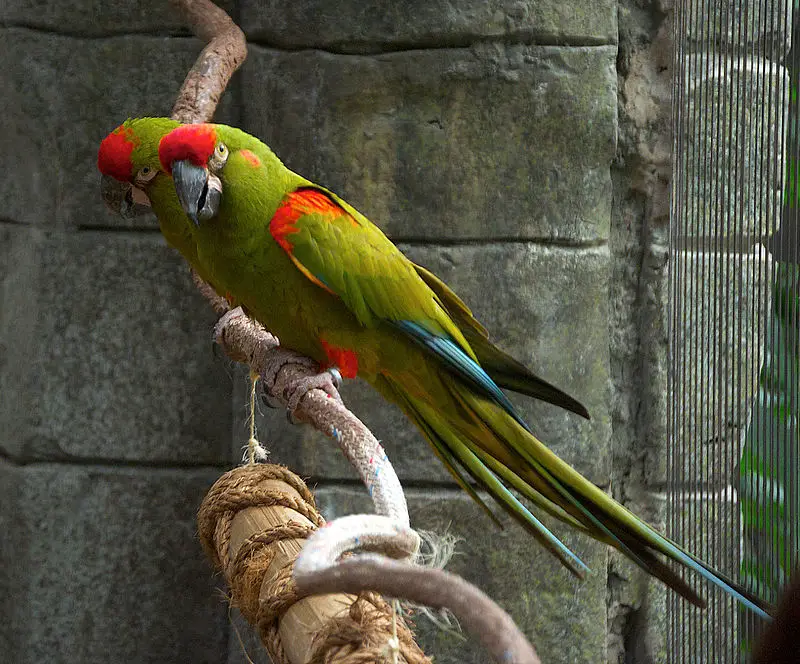
The Red-Fronted Macaw is a critically endangered parrot native to Bolivia. This beautiful bird has bright red, yellow and blue feathers that stand out in the semi-desert mountainous landscape of its home range.
It can make an excellent pet with proper care, though it’s not common due to its conservation status.
The species was first described by French ornithologist Frédéric de Lafresnaye who gave them their scientific name Ara rubrogenys.
With increasing efforts towards conservation and responsible ownership, we may yet be rewarded with seeing these birds living freely once again in their natural habitat.Scientific classification:
| Kingdom | Animalia |
| Phylum | Chordata |
| Class | Aves |
| Order | Psittaciformes |
| Family | Psittacidae |
| Genus | Ara |
| Species | A. rubrogenys |
2. Blue-Throated Macaw
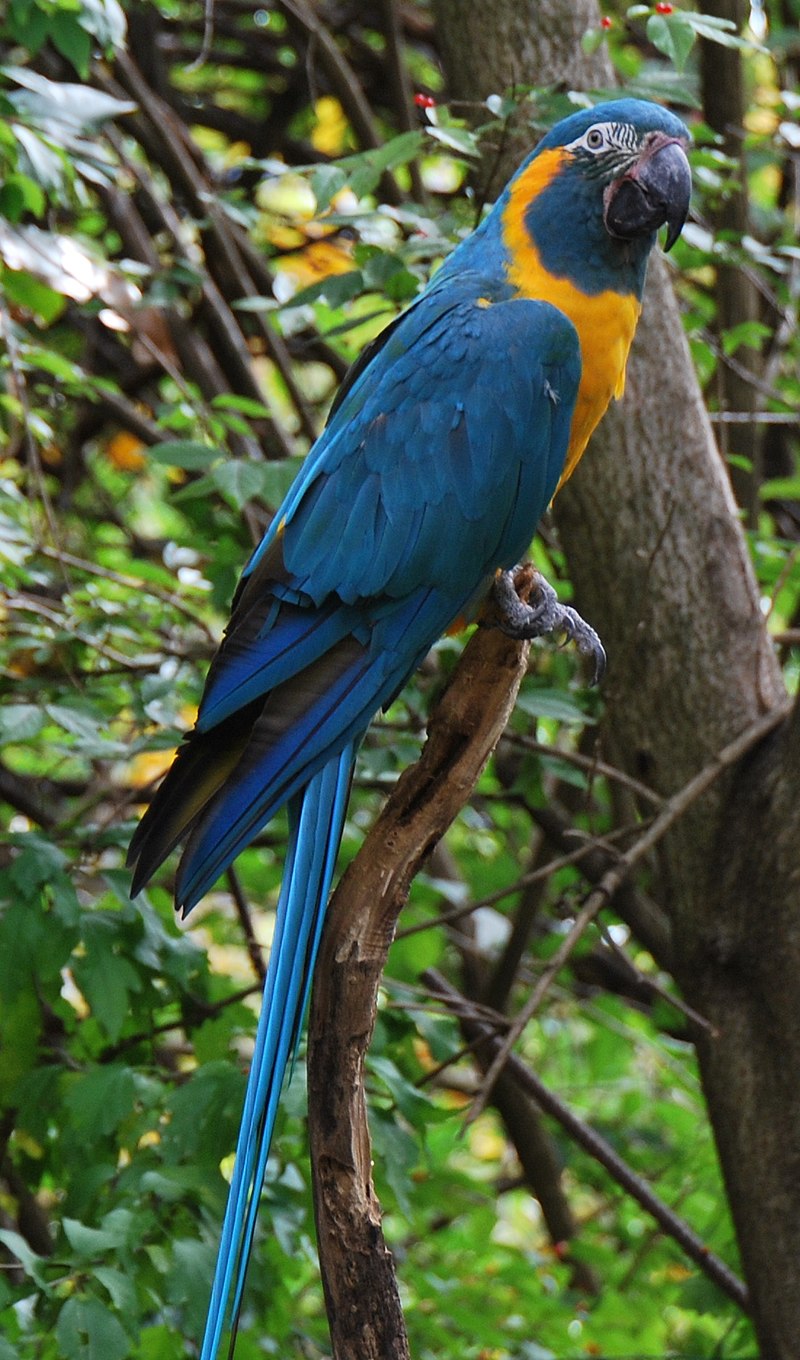
The Blue-throated Macaw, also known as the Caninde macaw or Wagler’s macaw, is a beautiful species of parrot native to Bolivia.
It has blue feathers on its head and throat which gave it its name; barba azul meaning ‘blue beard’ in Spanish.
Unfortunately this species was hunted by natives for its feathers until 2010 when they were designated natural patrimony of Bolivia.
Despite this protection their numbers remain low due to loss of habitat from deforestation and illegal trapping for pet trade purposes.
The population size is estimated at only 250 individuals making them critically endangered according to the IUCN Red List criteria.
Conservation efforts are currently underway through organisations such as Asociación Armonía who are working with local people towards protecting these birds and restoring their habitats so that future generations can enjoy seeing them in the wildScientific classification:
| Kingdom | Animalia |
| Phylum | Chordata |
| Class | Aves |
| Order | Psittaciformes |
| Family | Psittacidae |
| Genus | Ara |
| Species | A. glaucogularis |
3. Horned Curassow
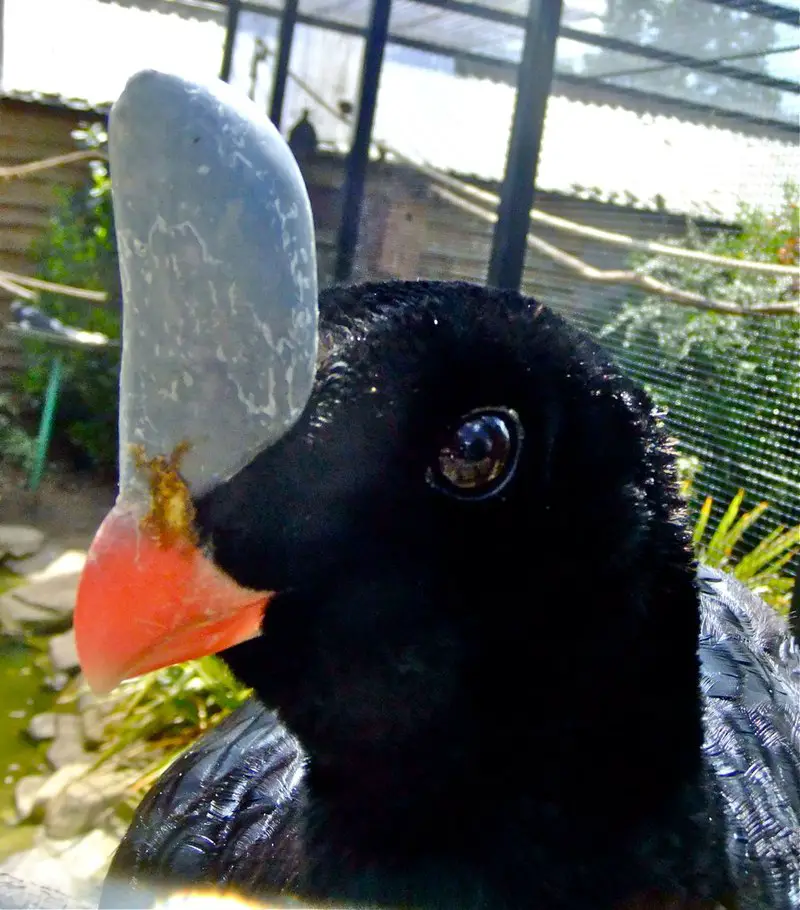
The Horned Curassow is a species of bird found in humid tropical and subtropical forests, belonging to the family Cracidae.
It was originally described by James Bond and Rodolphe Meyer de Schauensee from a specimen collected in Bolivia.
This large black-and-white bird has an impressive casque on its head which gives it its name – ‘horned’. Its body length can reach up to 70 cm with long wingspan measuring over one metre.
The female also features striking bright blue eyes making them quite eye catching creatures.
These birds are mainly terrestrial feeders who rely heavily on fruit trees for their diet.
They have been listed as vulnerable due to deforestation throughout much of their range leading to habitat loss.Scientific classification:
| Kingdom | Animalia |
| Phylum | Chordata |
| Class | Aves |
| Order | Galliformes |
| Family | Cracidae |
| Genus | Pauxi |
| Species | P. unicornis |
4. Masked Antpitta
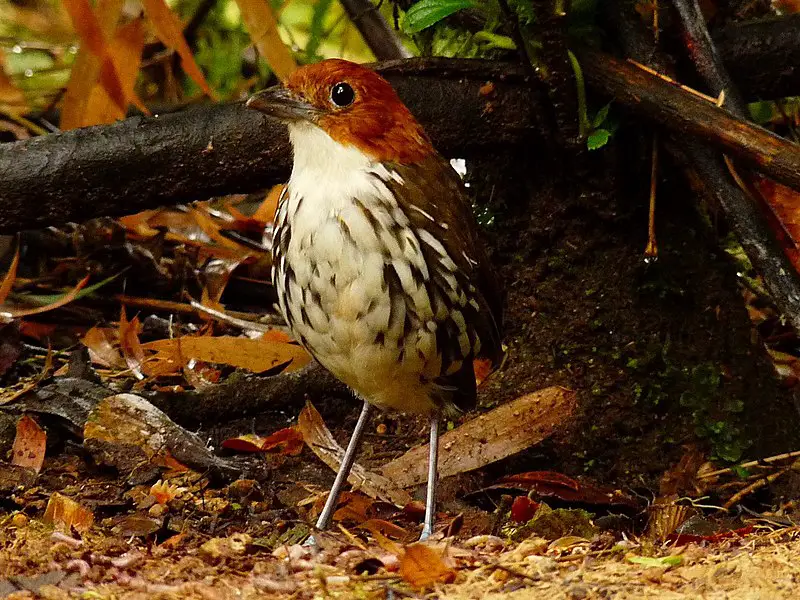
The Masked antpitta is a species of bird found in the family Grallariidae. It is endemic to Bolivia and can be located mainly in Riberalta, Puerto Hamburgo, as well as Aquicuana Reserve.
This peculiar bird enjoys living in subtropical or tropical moist lowland forests with its unique plumage that includes brown feathers on its head, wings and back accompanied by white spots on both sides of the chest area.
Furthermore it has a black mask across one eye making them easily recognizable from other birds within their range. The masked antpitta’s diet consists mostly of insects but also small reptiles such as lizards which they hunt for food using their long curved bill .
Unfortunately due to habitat destruction this species population numbers have been decreasing since 2018 putting them at risk so conservation efforts are necessary if we want these fascinating creatures around us for generations to come.Scientific classification:
| Kingdom | Animalia |
| Phylum | Chordata |
| Class | Aves |
| Order | Passeriformes |
| Family | Grallariidae |
| Genus | Hylopezus |
| Species | H. auricularis |
5. Rufous-Faced Antpitta
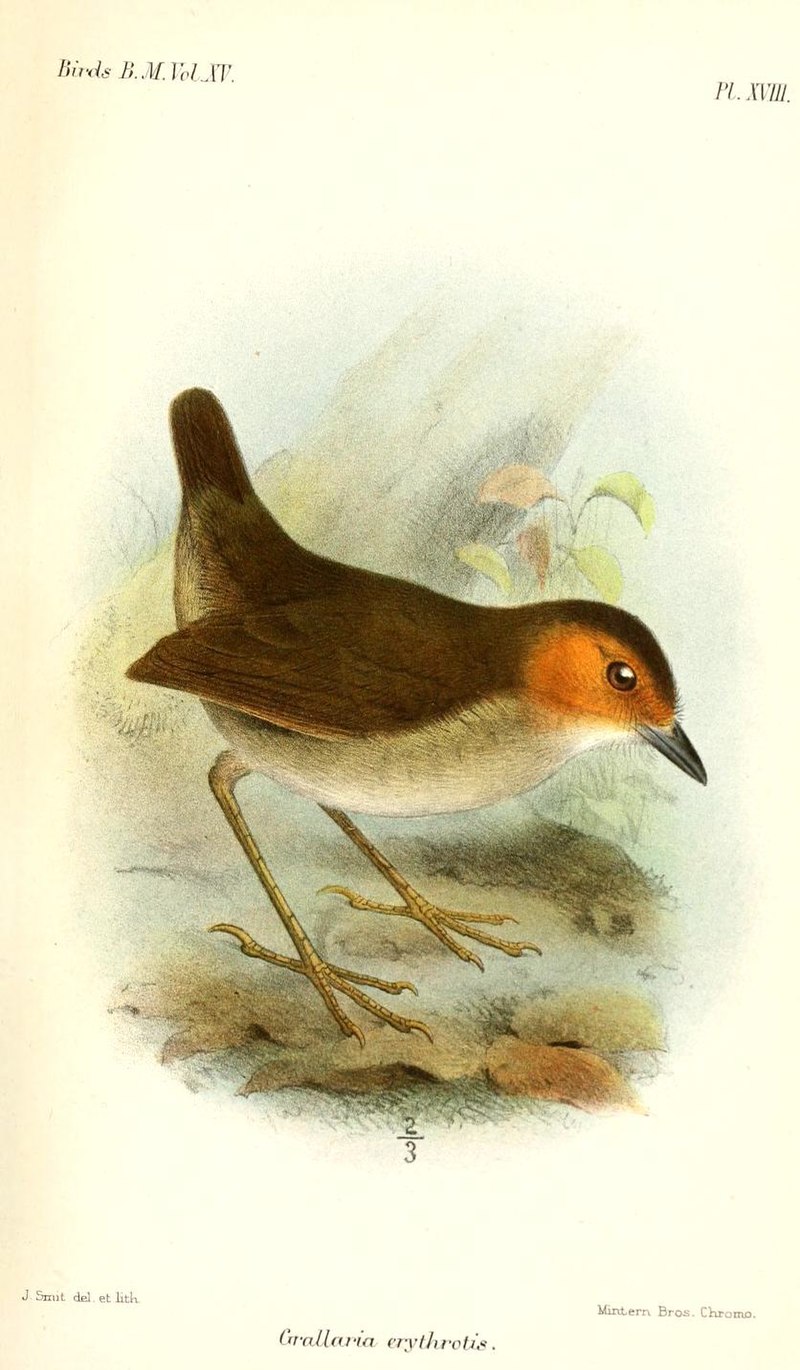
The Rufous-faced Antpitta is a species of bird found only in Bolivia. It has an unmistakable orange rufous face, lores and neck with dark olivaceous gray to brown upperparts and tail.
The breast is also orange rufous but streaked with white while the throat and belly are entirely white. This antpitta measures 18.5 cm long – about the size of an adult human hand – and weighs around 61 grams making it one of the smaller members of its genus Grallaria family.
Its distinct features make it easily recognizable among other birds native to Bolivia.Scientific classification:
| Kingdom | Animalia |
| Phylum | Chordata |
| Class | Aves |
| Order | Passeriformes |
| Family | Grallariidae |
| Genus | Grallaria |
| Species | G. erythrotis |
6. Toco Toucan
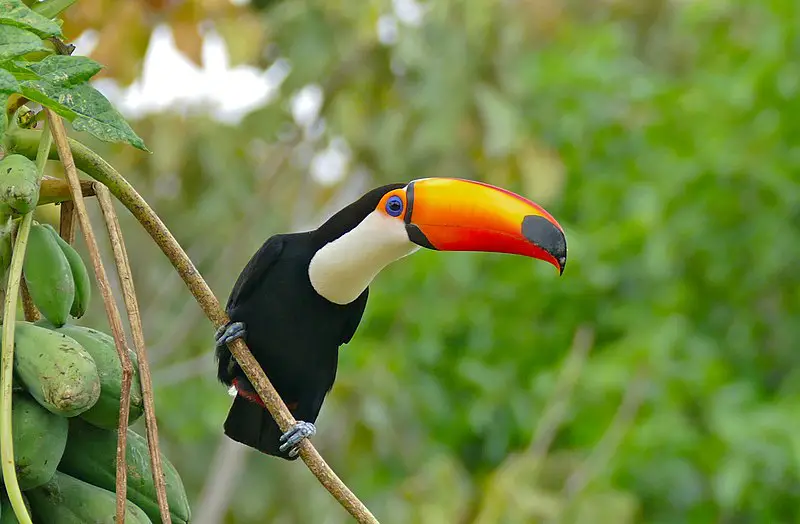
The Toco Toucan is the largest and most recognizable species of toucans, native to semi-open habitats in Central and Eastern South America.
First described by German zoologist Philipp Ludwig Statius Müller in 1776, this colorful bird has two subspecies – Ramphastos toco toco and Ramphastos toco cuvieri – distinguished by their slightly different size, plumage coloration, beak markings and range.
With its large orange bill covered with black spots along the sides of its face contrasting with yellow feathers on top of its head , it’s a very striking animal indeed.
Commonly found in zoos around the world too due tot heir loveable nature they are often kept as pets. They feed mainly on fruit but may also eat insects or small reptiles from time to time.
All in all these birds provide us a wonderful spectacle that we should appreciate for many years ahead.Scientific classification:
| Kingdom | Animalia |
| Phylum | Chordata |
| Class | Aves |
| Order | Piciformes |
| Family | Ramphastidae |
| Genus | Ramphastos |
| Species | R. toco |
7. Royal Cinclodes
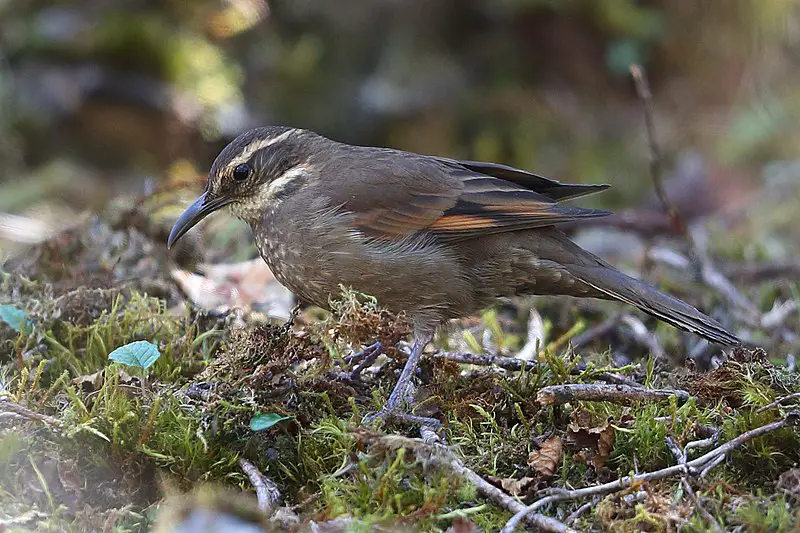
The Royal Cinclodes is a passerine bird found in the Andes of southeast Peru and adjacent Bolivia. It stands at 20 cm tall, with a weight of 50 g and a heavy bill.
Its feathers are dark chocolate-brown on its body, face and crown while they have white mottling and streaking on their breasts.
This species has an estimated population size between 10,000 to 100,000 individuals distributed across mountainous habitats such as grassland areas near water sources or wetlands.
The birds feed primarily by foraging for invertebrates amongst leaf litter or soil along rocky slopes but also consume fruits from shrubs when available.
They form monogamous pairs during breeding season which usually occurs during April – June depending upon elevation range within their distribution area .Scientific classification:
| Kingdom | Animalia |
| Phylum | Chordata |
| Class | Aves |
| Order | Passeriformes |
| Family | Furnariidae |
| Genus | Cinclodes |
| Species | C. aricomae |
8. Andean Condor
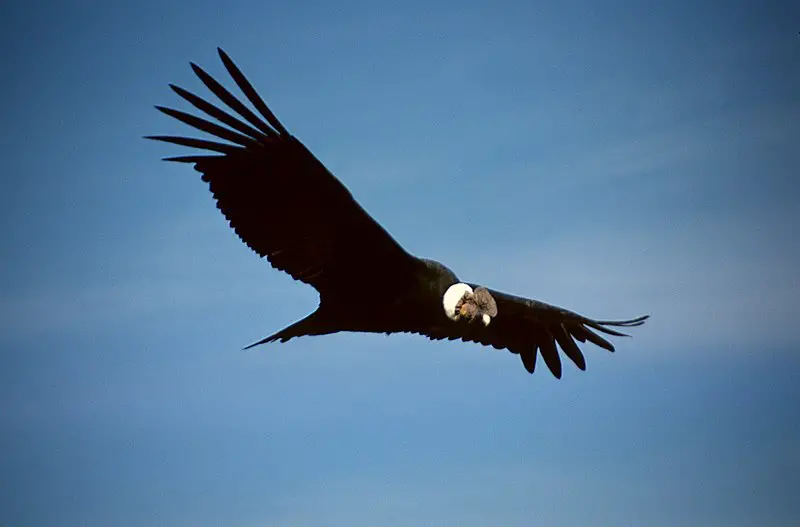
The Andean condor is a giant South American Cathartid vulture and the only member of its genus.
Found in the Andes mountains and along Pacific coasts, it is thought to be the largest flying bird on Earth by weight and wingspan with a maximum wingspan reaching up to 10 feet 10 inches (3.3 m) and weighing 33 lbs (15 kg).
It has mainly black plumage which helps keep it warm at high altitudes, while white patches adorn its head, neck, chest as well as underwing coverts.
Its powerful bill allows it to consume carrion efficiently while also being able to crack bones for nutrition when necessary.
The amazing flight capabilities of this majestic creature allow them soar through air thermals effortlessly; making them an impressive sight against clear blue skies.Scientific classification:
| Kingdom | Animalia |
| Phylum | Chordata |
| Class | Aves |
| Order | Accipitriformes |
| Family | Cathartidae |
| Genus | Vultur Linnaeus, 1758 |
| Species | V. gryphus |
9. Jacamars
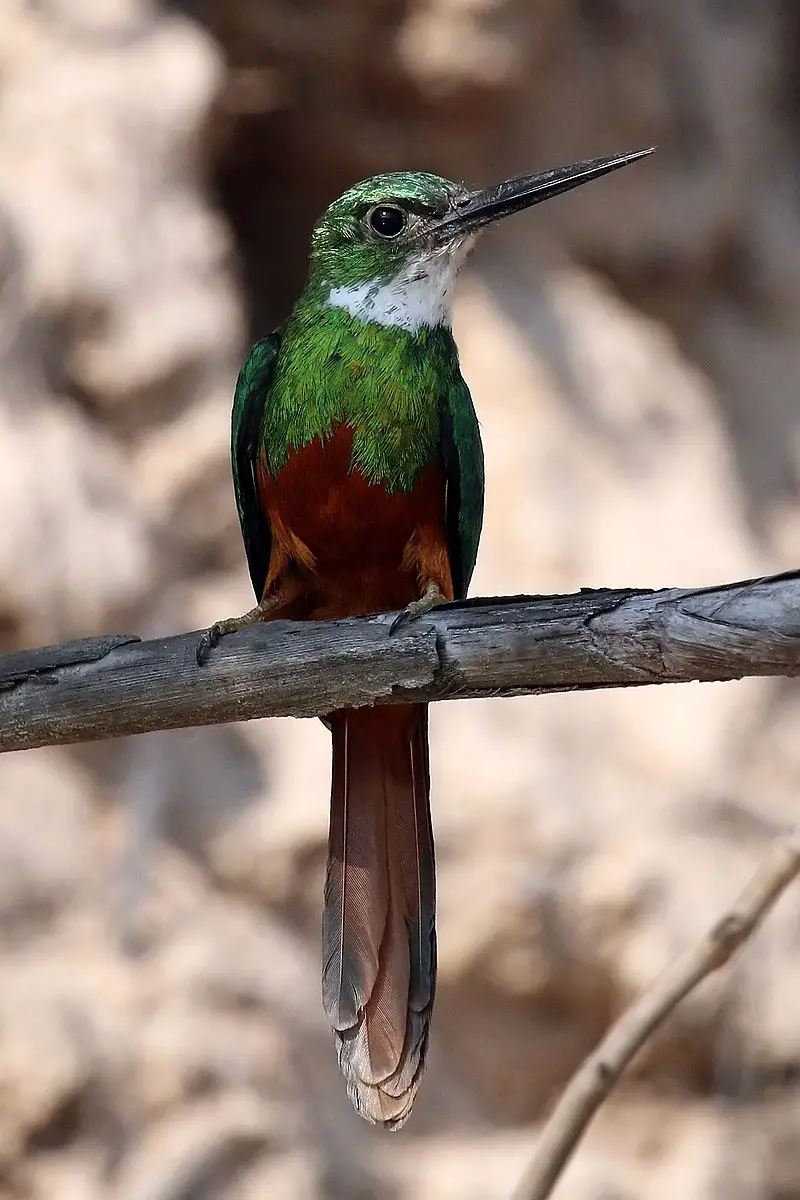
Jacamars are tropical birds native to South and Central America, extending as far north as Mexico. They belong to the Galbulidae family which consists of five genera and eighteen species in total.
These captivating birds can be easily distinguished by their unique appearance; they have long sharp bills with bright vivid plumage ranging from blues, greens and yellows that create a beautiful contrast against the lush vegetation of their natural habitat.
Jacamars prefer to inhabit dense forested areas near rivers or streams where they use their agile wings for quick flight maneuvers while hunting insects, lizards and frogs.
With an unmistakable presence these fascinating feathered creatures make a remarkable addition to any backyard bird sanctuary.Scientific classification:
| Kingdom | Animalia |
| Phylum | Chordata |
| Class | Aves |
| Order | Piciformes |
| Suborder | Galbuli |
| Family | Galbulidae Vigors, 1825 |
10. Trogon
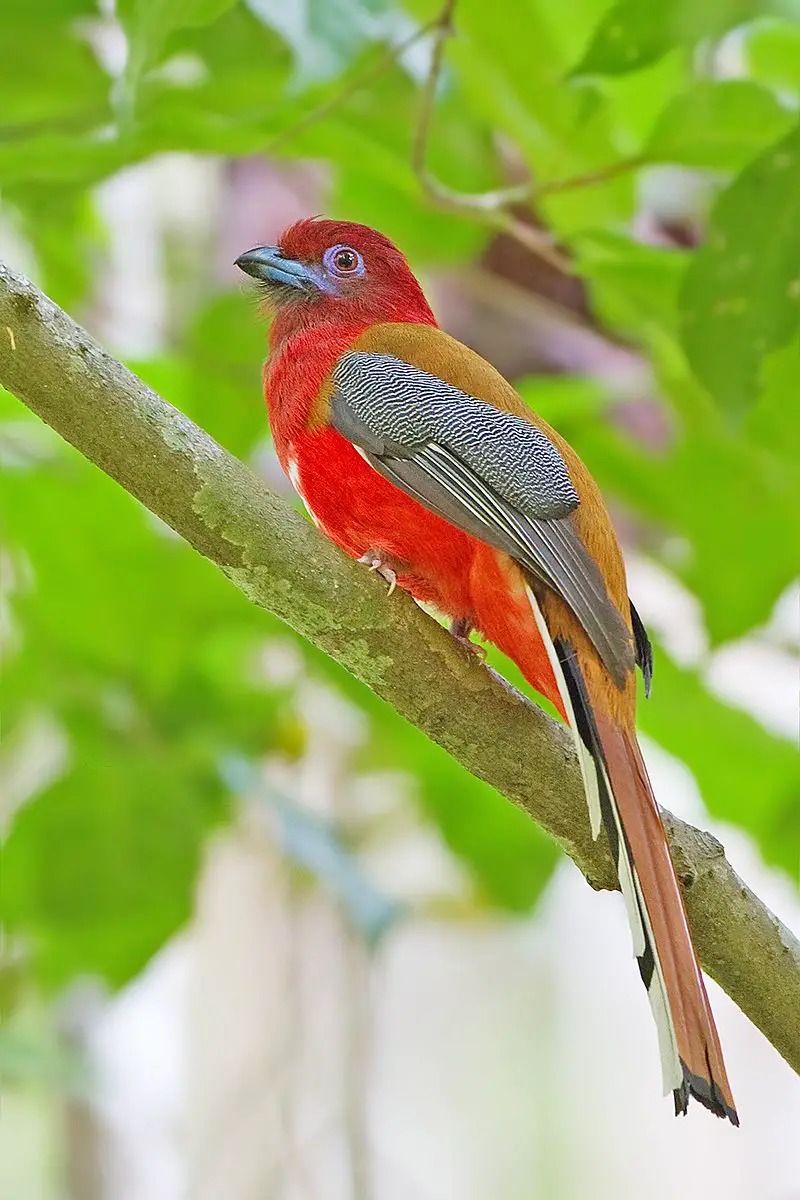
Trogons are a unique bird species that can be found all over the world. They belong to the order Trogoniformes and have only one family, called Trogonidae, which consists of 46 species in seven genera.
Fossil records show that trogons existed 49 million years ago during the Early Eocene period. It is believed they may be closely related or form part of two other orders: Coraciiformes and Passerines.
These birds typically have brightly colored feathers with some having iridescent colors on their wings and tails as well as red bellies and breasts.
Their diet mainly consists of fruit, insects, lizards and frogs but larger ones will also feed on small mammals such as mice or bats.
The most famous member from this group is Quetzalcoatlus – an extinct giant pterosaur which lived approximately 70-65 million years agoScientific classification:
| Kingdom | Animalia |
| Phylum | Chordata |
| Class | Aves |
| Clade | Cavitaves |
| Clade | Eucavitaves |
| Order | Trogoniformes AOU, 1886 |
| Family | Trogonidae Lesson, 1828 |
11. White-Throated Screech Owl
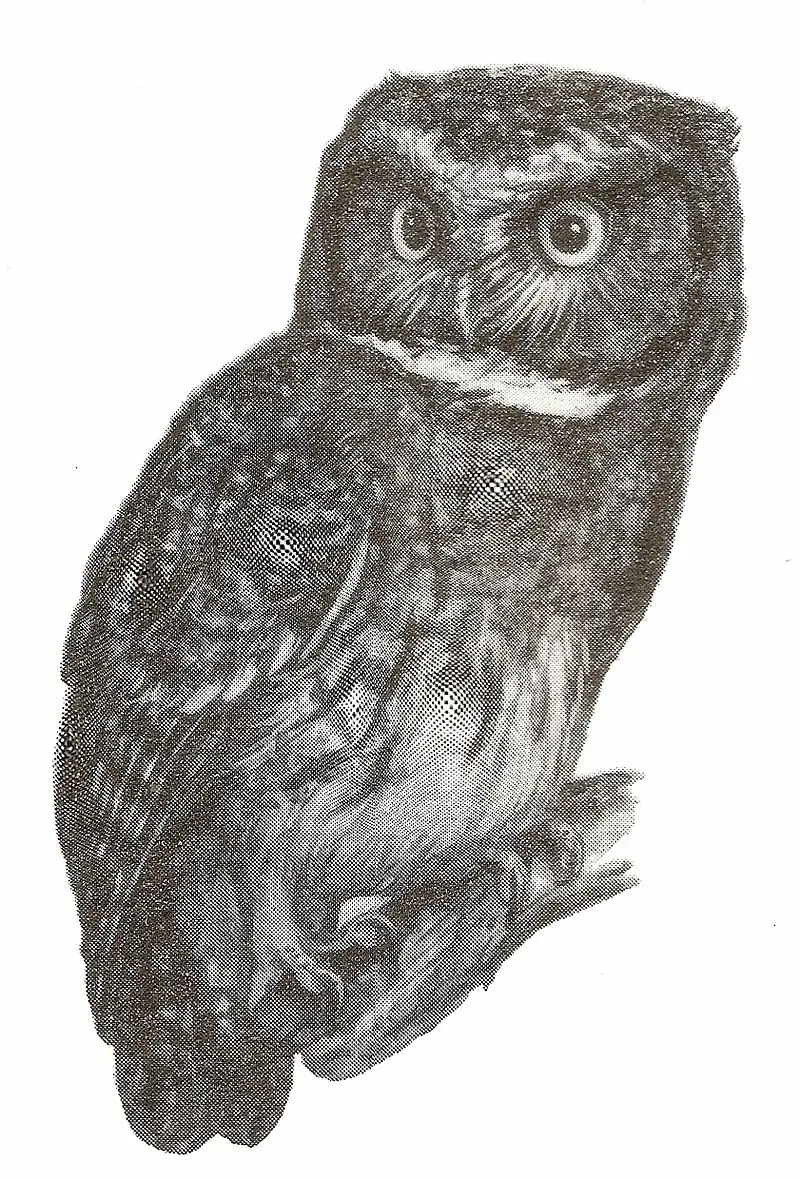
The White-throated Screech Owl is a small owl that can be found in the Andes of Bolivia, Colombia, Ecuador, Peru and Venezuela. It was first described by American ornithologist John Cassin in 1849 and five subspecies have since been recognised.
Taxonomic uncertainty still exists around this species however due to questions over its taxonomy and classification. Its plumage is mainly grey or brown with white scapulars on each side of its neck which give it distinctive markings; coupled with bright yellow eyes make for a striking appearance.
They typically nest inside tree hollows but may also use old nests from other birds if available. The diet includes flying insects as well as lizards mice and frogs all of which are hunted at night when they are most active.Scientific classification:
| Kingdom | Animalia |
| Phylum | Chordata |
| Class | Aves |
| Order | Strigiformes |
| Family | Strigidae |
| Genus | Megascops |
| Species | M. albogularis |
12. Motmot
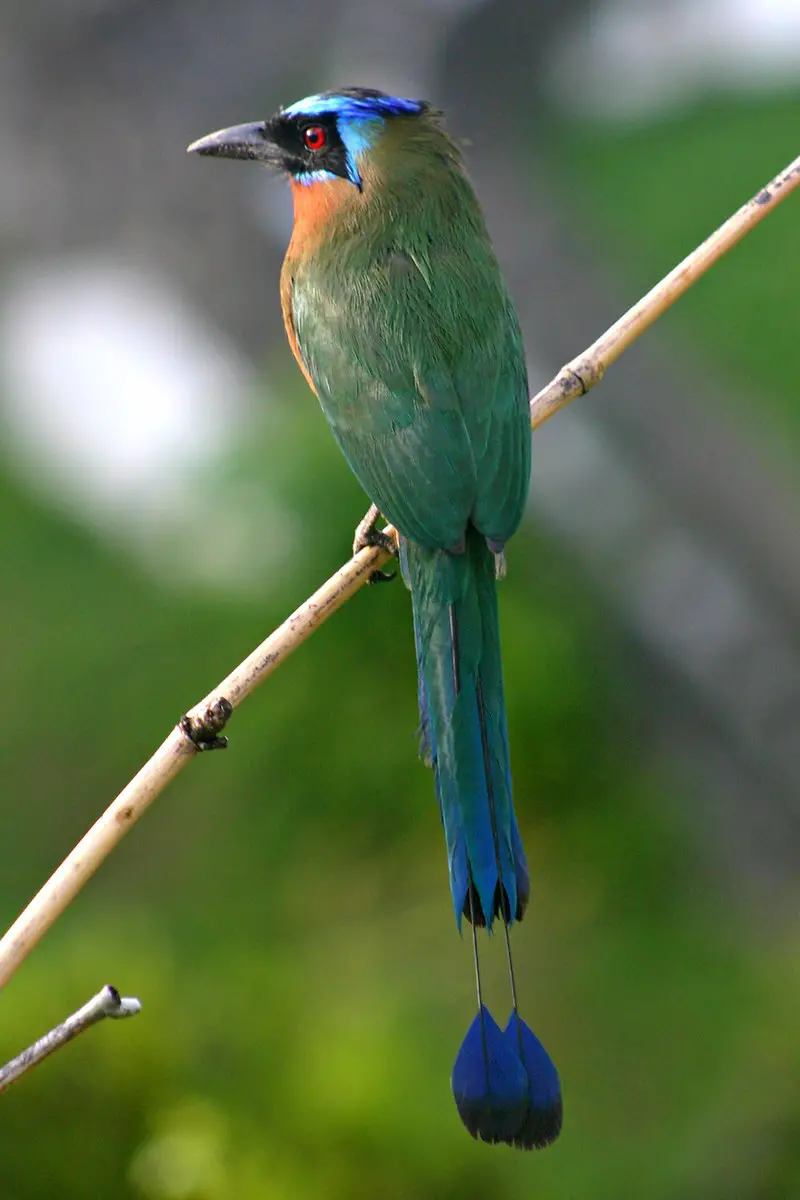
Motmots are a family of birds in the order Coraciiformes, known for their vibrant plumage and relatively heavy bills. They inhabit woodlands or forests across the Neotropics and can range in size from small to large.
The most distinctive feature of motmot species is their long tail feathers that some have adorned with unique patterns like eyespots.
Their diet consists mainly of insects but they will also eat smaller vertebrates such as lizards, frogs and fish.
Motmots are active during daylight hours where they can be seen perching on branches along forest edges or flitting through trees hunting prey.
These beautiful creatures have become an important part of many peoples’ lives throughout Latin America due to them being considered symbols of good luck by local cultures.Scientific classification:
| Kingdom | Animalia |
| Phylum | Chordata |
| Class | Aves |
| Order | Coraciiformes |
| Family | Momotidae GR Gray, 1840 |
13. Psophia
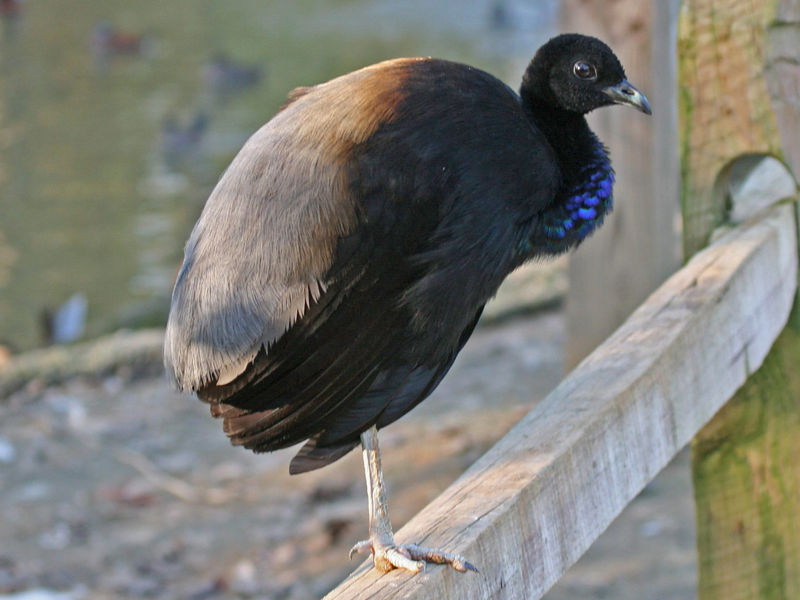
Psophia is a genus of birds found in South America, and are the only members of the Psophiidae family. They have an unmistakable appearance, with their long legs and necks giving them a chicken-like stature.
Males make loud trumpeting or cackling noises when they feel threatened. The three species range from 45 to 52 centimetres (18 to 20 inches) in length, weighing up to 1.5 kg (2 lbs).
They live mainly in humid forests across the Amazon and Guiana Shield regions, where there is plenty for them forage on such as fruit, insects and small animals like lizards or frogs.
These fascinating creatures play an important role within their environment; helping disperse seeds throughout the forest by eating fruits which contain large quantities of seeds that will eventually be spread elsewhere through defecation.Scientific classification:
| Kingdom | Animalia |
| Phylum | Chordata |
| Class | Aves |
| Order | Gruiformes |
| Family | Psophiidae Bonaparte, 1831 |
| Genus | Psophia Linnaeus, 1758 |
14. Plovers

Plovers are a family of around 64-68 species of ground-dwelling birds, commonly found in open country such as fields, meadows and tundras.
They have short bills with webbed feet to help them forage through mud or shallow water.
Plover plumage is usually mottled brown though some species may have brighter colors on the head and wings.
These birds feed mainly on insects but can also eat small crustaceans and worms.
Plovers breed during springtime when they dig holes in sandy or pebbled beaches to lay their eggs which hatch after about 3 weeks incubation period.
They use distraction display behaviour by pretending an injury to the predators away from their nests if needed for protecting their young ones.Scientific classification:
| Kingdom | Animalia |
| Phylum | Chordata |
| Class | Aves |
| Order | Charadriiformes |
| Family | Charadriidae Leach, 1820 |
15. Stilts And Avocets
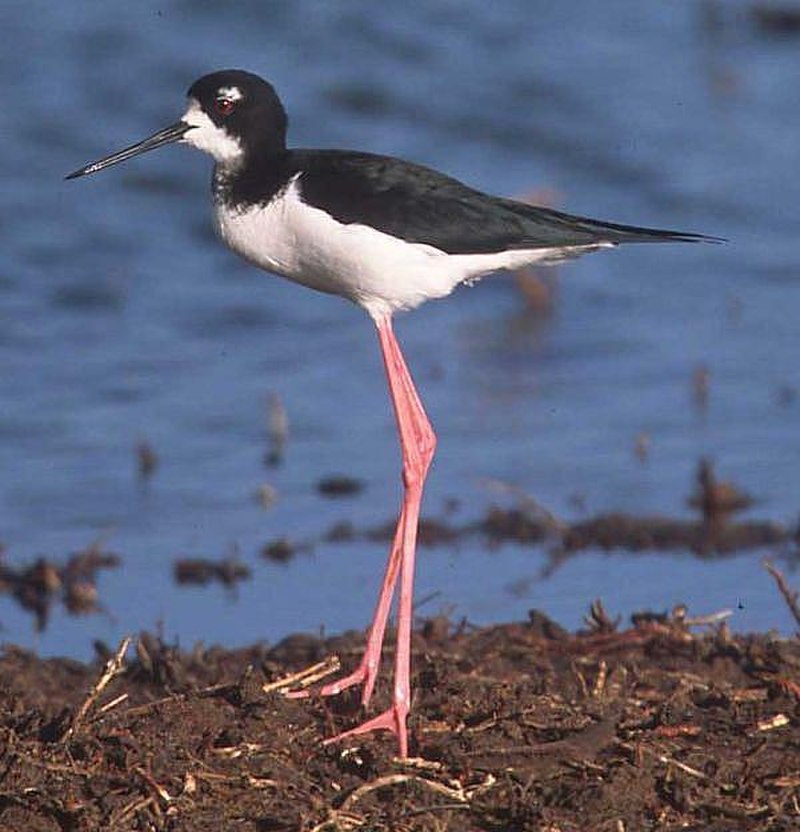
Stilts and avocets are two distinct groups of birds belonging to the family Recurvirostridae. They range in length from 30-46 cm (12-18 inches) and weigh between 140 – 435 g (4.9 – 15.3 ounces).
Males usually have slightly larger bodies than females, with long thin legs, necks and bills.
Avocet bills curve upwards uniquely while stilt beaks remain straight most times.
These wading birds live mainly near shorelines or wetlands where they feed on aquatic invertebrates like brine shrimp, insects etc., occasionally supplementing their diet with seeds or small fish too.
Stilts also inhabit open fields in search of food sources such as earthworms or grasshoppers during the non-breeding season.
Both groups migrate over large distances for warmer weathers when it gets cold outside.Scientific classification:
| Kingdom | Animalia |
| Phylum | Chordata |
| Class | Aves |
| Order | Charadriiformes |
| Suborder | Charadrii |
| Family | Recurvirostridae Bonaparte, 1854 |
16. Hooded Tinamou
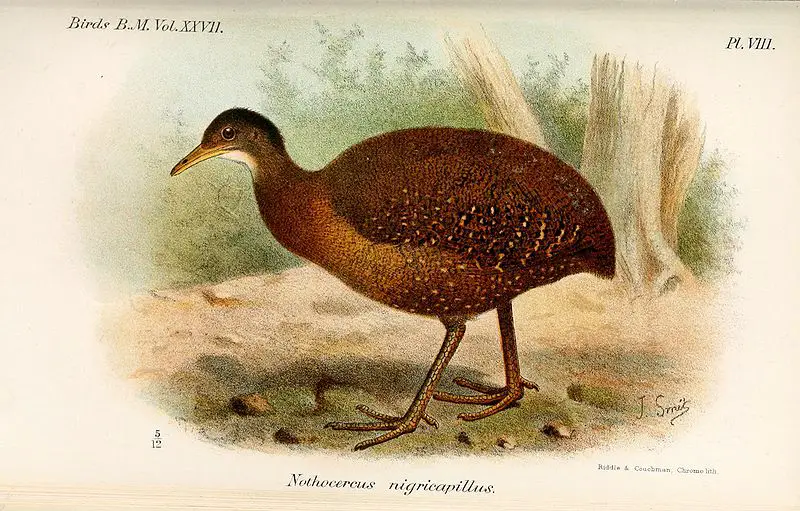
The Hooded Tinamou is a ground bird found in the forests of Bolivia and Peru. It belongs to the family Tinamidae, making it a ratite – an ancient group of flightless birds that includes ostriches and emus.
Although tinamous can fly, they are not particularly good at it compared with other members of its order such as ducks or geese. In terms of physical characteristics, hooded tinamous have grayish-brown feathers on their upper body while the underside displays black and white striped markings.
They also feature light grey facial masks surrounded by dark brown crests which give them their name; ‘hooded’. The diet for these birds consists mainly of fruits, seeds, flowers and insects which they find among leaf litter on the forest floor.Scientific classification:
| Kingdom | Animalia |
| Phylum | Chordata |
| Class | Aves |
| Infraclass | Palaeognathae |
| Order | Tinamiformes |
| Family | Tinamidae |
| Genus | Nothocercus |
| Species | N. nigrocapillus |
17. Bar-Breasted Piculet
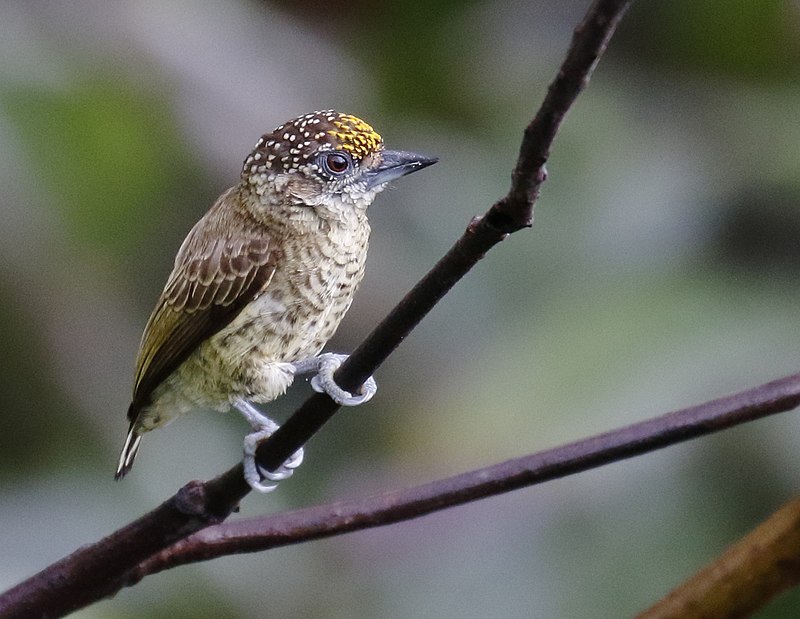
The Bar-breasted piculet is a species of small bird found in Bolivia, Brazil, Colombia and Peru. It has seven subspecies: P.a borbae, P.A wallacii, and P.a juruanus to name a few which have been treated as individual species at times by some researchers.
These birds are usually seen foraging on the ground or perched low down among branches of trees looking out for insects or other prey like spiders and lizards etc..
They possess long pointed bills that help them dig into bark crevices searching for food items such as larvae & pupal cases hidden inside tree trunks.
The bar-breasted piculet generally inhabits dry deciduous forest patches with plenty of available perching sites provided by leafless shrubs & trees making it easier to spot their predators from above.Scientific classification:
| Kingdom | Animalia |
| Phylum | Chordata |
| Class | Aves |
| Order | Piciformes |
| Family | Picidae |
| Genus | Picumnus |
| Species | P. aurifrons |
18. Bolivian Brushfinch
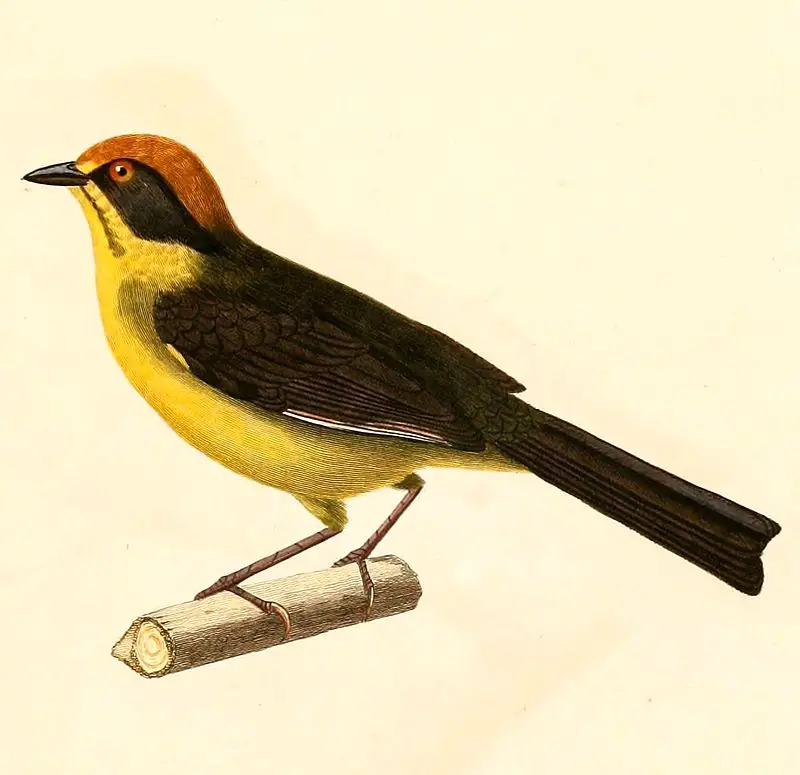
The Bolivian brushfinch is a species of bird found only in Bolivia. It lives in humid Andean forests and has several subspecies, including the rufous-naped brushfinch, Vilcabamba brushfinch and grey-eared brushfinches.
This small passerine bird has brown upperparts with a black mask on its face along with white to yellowish underparts depending on the subspecies.
They average between 11–14cm long and weigh 20g or less. The diet for this species consists mainly of insects but also includes fruits and seeds which they will eat seasonally when available.
Their breeding season takes place during springtime where pairs build their nests together out of twigs lined with finer materials such as feathers among other items found in nature around them.Scientific classification:
| Kingdom | Animalia |
| Phylum | Chordata |
| Class | Aves |
| Order | Passeriformes |
| Family | Passerellidae |
| Genus | Atlapetes |
| Species | A. rufinucha |
19. Large-Billed Tern
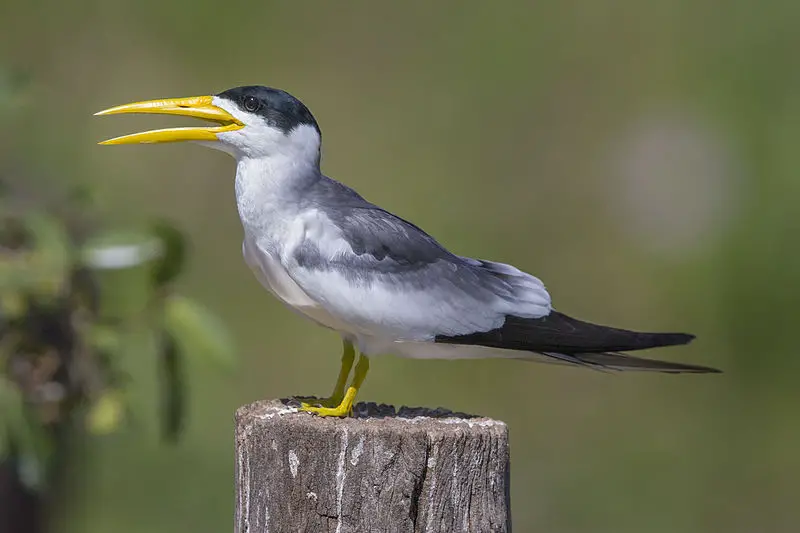
The Large-billed Tern is a species of tern found in most parts of South America. It was formally described by scientists back in 1786 and can be identified for its large bill, which it uses to feed on small fish or insects near rivers or freshwater lakes.
This bird has also been spotted as a vagrant in other countries such as Aruba, Bermuda, Cuba, Panama and the United States.
The Large-Billed Tern prefers shallow waters with plenty of vegetation around them so that they can find food easily while still providing themselves protection from larger predators.
They are quite adept at fishing using their long bills to catch prey but will also scavenge when needed.
In conclusion the Large-billed Tern is an interesting bird who plays an important role within its natural habitat.Scientific classification:
| Kingdom | Animalia |
| Phylum | Chordata |
| Class | Aves |
| Order | Charadriiformes |
| Family | Laridae |
| Genus | Phaetusa Wagler, 1832 |
| Species | P. simplex |
Also Featured In: Birds that Live in Guyana,
20. Grey-Bellied Flowerpiercer
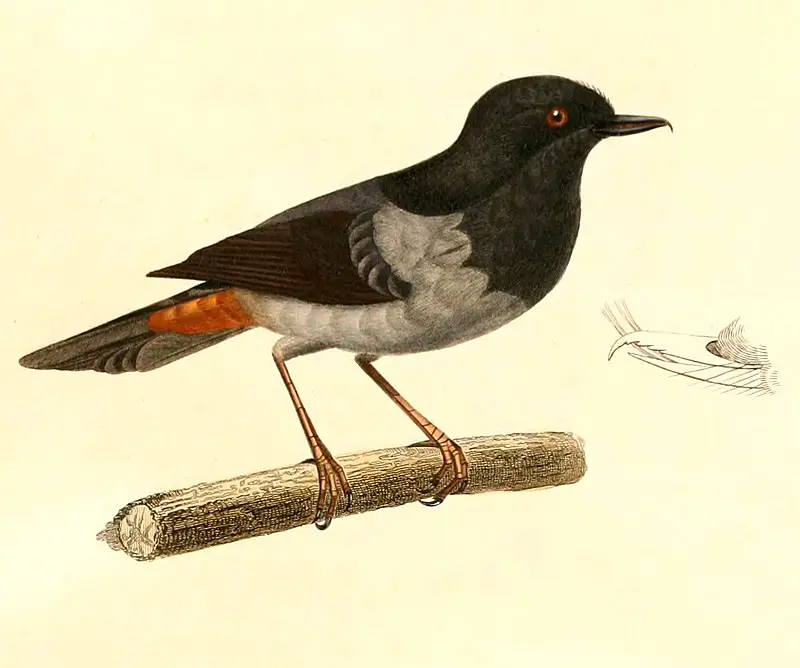
The Grey-bellied Flowerpiercer is a brightly colored bird found in the Bolivian Andes and Northwestern Argentina. It belongs to the Thraupidae family of birds, which includes species such as tanagers and cardinals.
This unique bird has greyish underparts with black wings that stand out against its vibrant yellow breast feathers. Its habitat consists mainly of montane forests, shrublands, and degraded former forest areas where it can find food like nectar from flowers or small insects.
The Grey-bellied Flowerpiercer plays an important role in helping pollinate plants by carrying pollen on its head while searching for nectar sources amongst flowering plants.Scientific classification:
| Kingdom | Animalia |
| Phylum | Chordata |
| Class | Aves |
| Order | Passeriformes |
| Family | Thraupidae |
| Genus | Diglossa |
| Species | D. carbonaria |
21. Blue-Crowned Parakeet
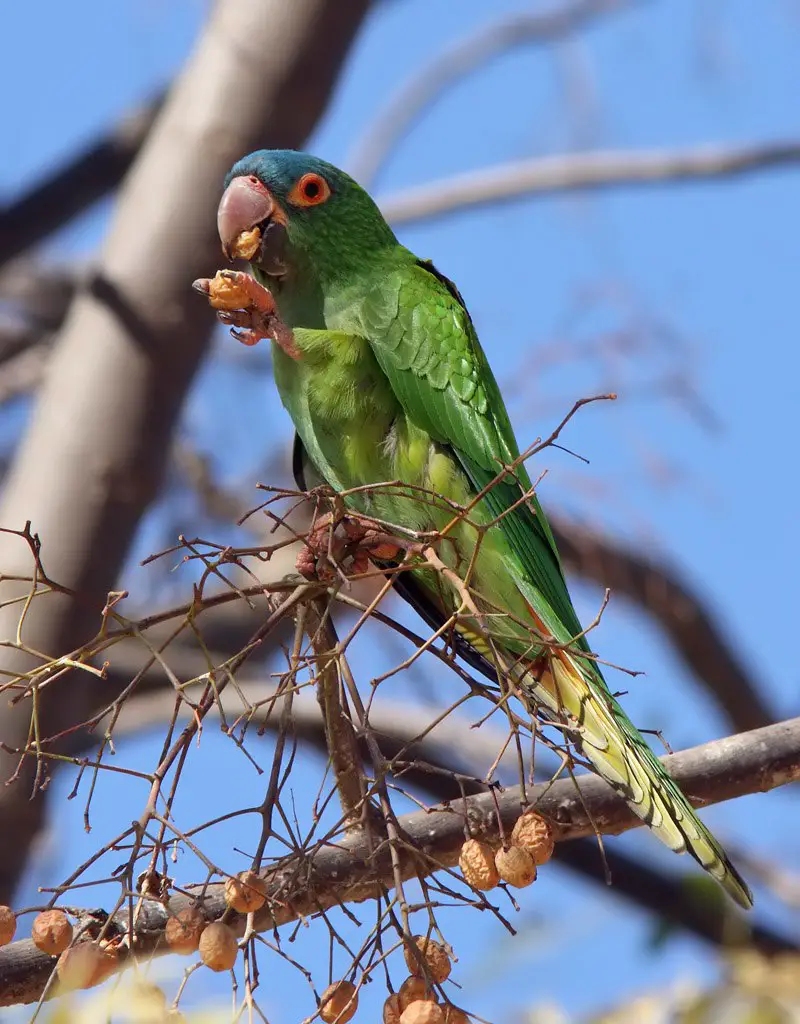
The Blue-crowned parakeet is a small, green Neotropical bird native to South America. It has a blue head and pale beak with sharp tail feathers that set it apart from other species of parrots.
They are commonly found in savanna-like habitats, woodland edges, and open forest areas but avoid dense humid forests like the Amazon rainforest.
This species feeds primarily on fruits and nuts as well as some insects such as grubs or caterpillars at times.
The Blue-crowned Parakeet pairs for life and will raise their young in flocks known as crèches which consist of both parents taking care of multiple clutches at once.
These birds make wonderful pets if properly socialized because they can learn to mimic human speech quite easily while also being very affectionate companions.Scientific classification:
| Kingdom | Animalia |
| Phylum | Chordata |
| Class | Aves |
| Order | Psittaciformes |
| Family | Psittacidae |
| Tribe | Arini |
| Genus | Thectocercus Ridgway, 1912 |
| Species | T. acuticaudatus |
Also Featured In: Green Birds Commonly Found in Florida,
22. Berlepsch’s Canastero
Berlepsch’s canastero is a species of bird belonging to the ovenbird family, Furnariidae. It is endemic to Bolivia and commonly found in subtropical or tropical high-altitude shrubland as well as rural gardens.
Unfortunately, this beautiful species faces threats from habitat loss due to human activities such as deforestation and urbanization. The bird was named after German ornithologist Hans von Berlepsch who collected specimens for scientific research during his travels through South America in the late 19th century.
This small passerine has brown plumage with white stripes on its wings and tail feathers covered in black barring patterns which gives it an attractive appearance when seen up close.
Its diet consists mainly of insects and other invertebrates that live among plants making them useful pest control agents for local farmers if left undisturbed by humans.
Hopefully more awareness about this unique Bolivian native will help conserve its population so future generations may be able enjoy these lovely birds around their homes too.Scientific classification:
| Kingdom | Animalia |
| Phylum | Chordata |
| Class | Aves |
| Order | Passeriformes |
| Family | Furnariidae |
| Genus | Asthenes |
| Species | A. berlepschi |
23. Bolivian Warbling Finch
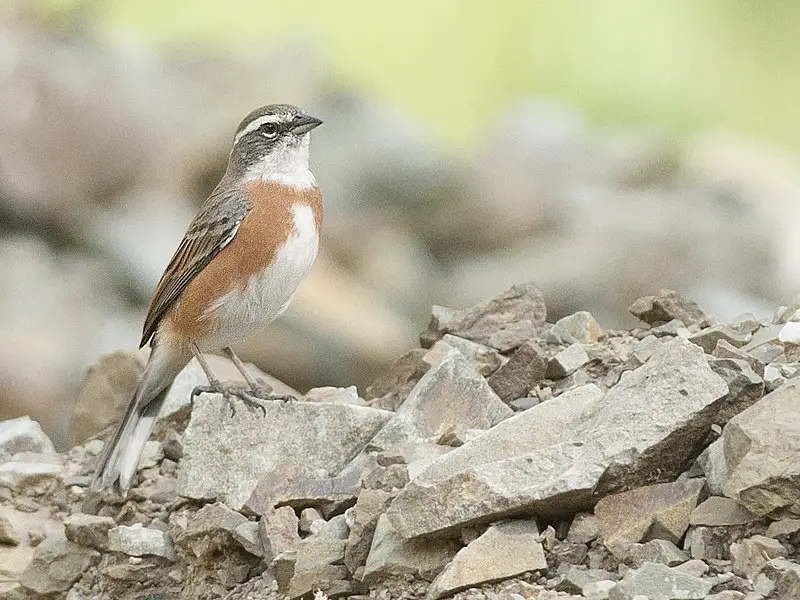
The Bolivian warbling finch is a species of bird in the family Thraupidae. It inhabits subtropical and tropical high-altitude shrublands in Argentina and Bolivia, where it feeds on insects, fruit, flowers and seeds from plants.
This small songbird has an average length of 12 cm (4¾ inches) with a wingspan up to 20 cm (8 inches). Its plumage is mainly greyish brown above with whitish underparts which are heavily streaked or mottled blackish. The tail feathers have white tips giving this species its distinctive patterning.
Males also possess some brighter yellow colouration around the throat area during breeding season that helps attract potential mates for mating displays. In order not to be outdone by other males competing for females’ attention they have developed a beautiful melodious song consisting of long trills ranging several minutes in duration.Scientific classification:
| Kingdom | Animalia |
| Phylum | Chordata |
| Class | Aves |
| Order | Passeriformes |
| Family | Thraupidae |
| Genus | Poospiza |
| Species | P. boliviana |
24. Chestnut-Eared Aracari
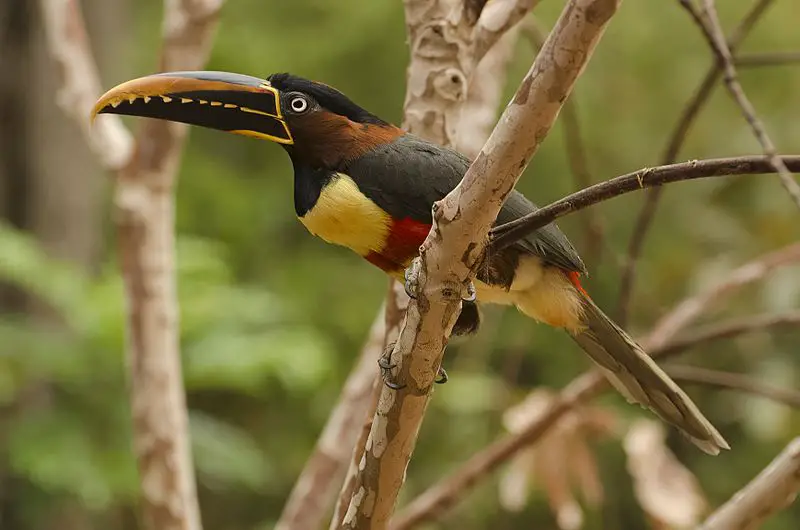
The Chestnut-eared Aracari is a beautiful near-passerine bird found in Argentina, Bolivia, Brazil, Colombia, Ecuador Paraguay and Peru. It has two subspecies – the nominate Pteroglossus castanotis and P.
c australis – both of which have bright chestnut colored feathers at their ears that really stand out against its mostly black body plumage.
The average size for this species is 43 cm (17 inches) long but can reach up to around 48 cm (19 inches).
They are known to be quite vocal birds with loud calls being heard during flight or while they feed on fruits at canopy level as they hop from branch to branch using their strong feet and curved bills.
This stunning creature will always capture attention due to its bold colors making it a real delight for any nature lover.Scientific classification:
| Kingdom | Animalia |
| Phylum | Chordata |
| Class | Aves |
| Order | Piciformes |
| Family | Ramphastidae |
| Genus | Pteroglossus |
| Species | P. castanotis |
Also Featured In: Rainforest Birds You Should Know, Common Tropical Rainforest Birds
25. Speckled Chachalaca
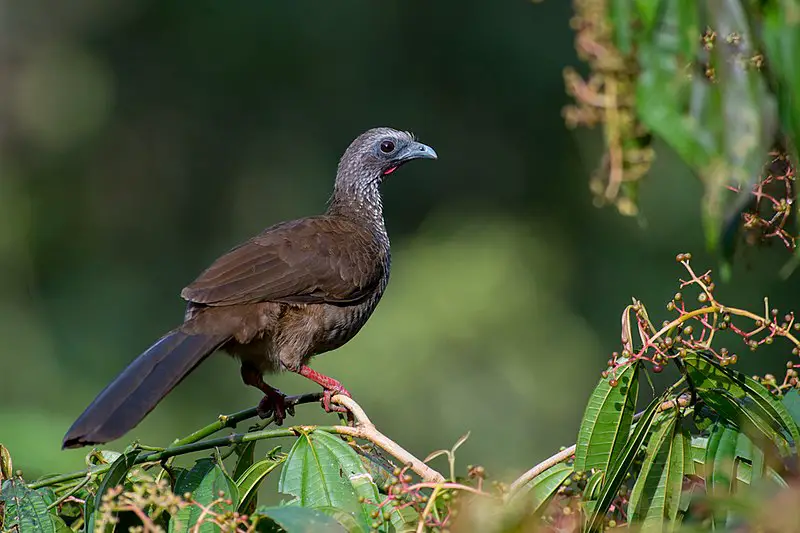
The Speckled Chachalaca is a unique and interesting bird, belonging to the family Cracidae. It can be found in Bolivia, Brazil, Colombia, Ecuador and Peru.
The taxonomic history of this species has been difficult to determine due to its similarities with other birds such as Variable Chachalacas and Buff-Browed Chachalacas.
This medium sized bird has an overall brown plumage on its body along with black spots which give it the speckled appearance that gives them their name.
They have long tail feathers which they use for display purposes when trying to attract mates or scare away predators from their nests during breeding season .
These chachalacas are also known for being quite vocal creatures; making loud calls throughout the day which helps identify members within flocks of these birds.Scientific classification:
| Kingdom | Animalia |
| Phylum | Chordata |
| Class | Aves |
| Order | Galliformes |
| Family | Cracidae |
| Genus | Ortalis |
| Species | O. guttata |
26. Rufous-Tailed Jacamar
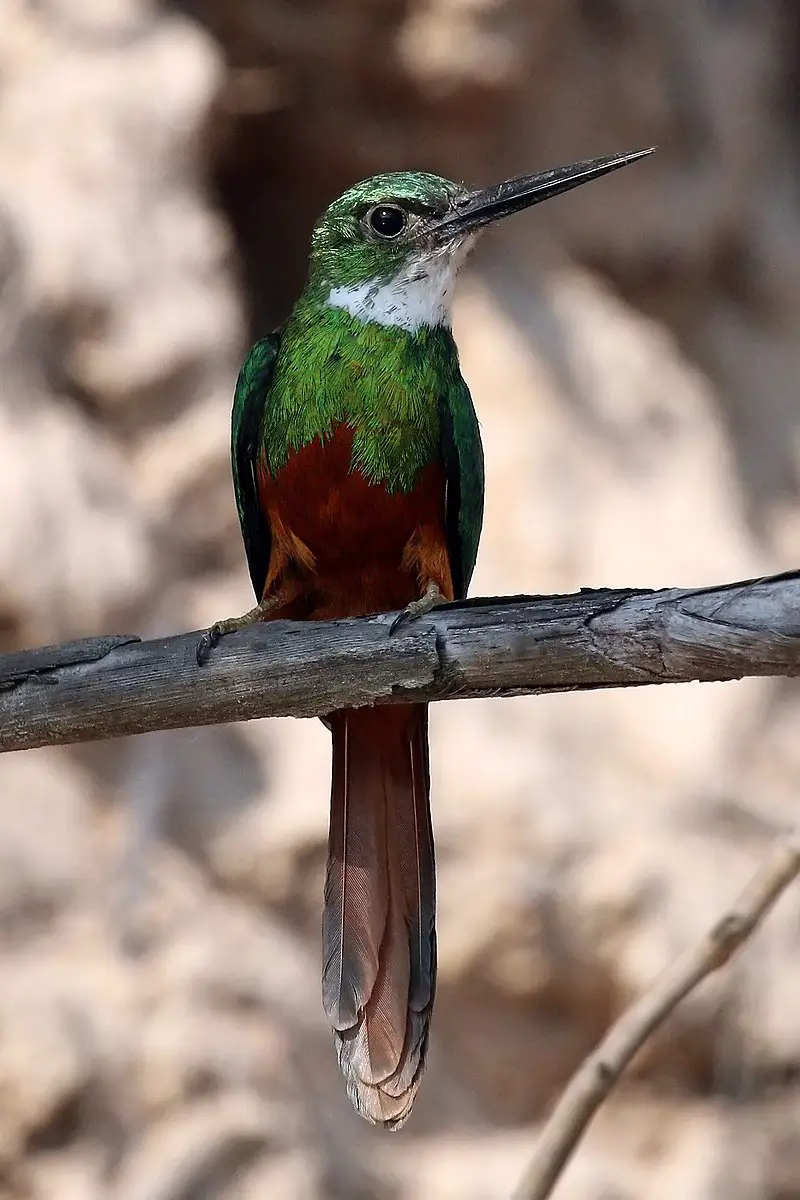
The Rufous-tailed Jacamar is a near-passerine bird that lives in tropical regions of Mexico, Central and South America. It’s about 25 cm long with a 5 cm black bill and its distinguishing feature is its rufous coloured tail feathers.
Its body has an elegant shape with bright plumage consisting of mainly green hues on the head, neck and wings; whilst it’s chest is white with yellow speckles.
These birds feed mostly on insects which they catch midair or from branches using their long bills to pluck them out.
They build nests made from twigs lined by mosses in tree cavities where they lay two eggs at once during breeding season between April – August each year.Scientific classification:
| Kingdom | Animalia |
| Phylum | Chordata |
| Class | Aves |
| Order | Piciformes |
| Family | Galbulidae |
| Genus | Galbula |
| Species | G. ruficauda |
27. Lineated Woodpecker
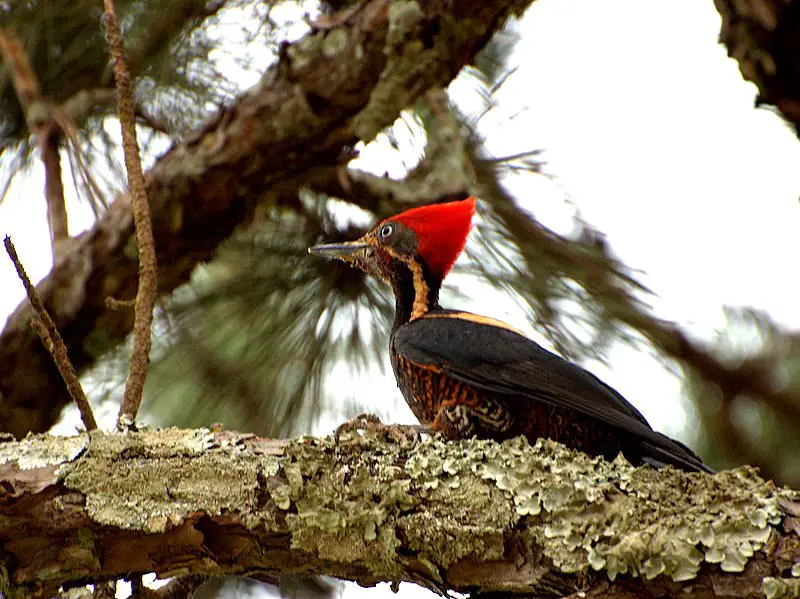
The Lineated Woodpecker is a large bird found in Mexico, Argentina and the Caribbean. It was first described by French zoologist Mathurin Jacques Brisson in 1760 with the name Le pic noir.
This species has black upperparts, wings and tail with white stripes running along its back and head; it also features red marks on its forehead as well as on both sides of its neck.
Its underparts are mostly greyish-white while its bill is yellowish-black and slightly hooked at the end.
These birds feed mainly on insects but can sometimes be seen foraging for fruits or tree sap too.
They nest inside cavities usually made from dead trees which they excavate themselves using their strong bills perfect for drilling into woody material easily.
All in all, these beautiful birds make an interesting addition to any backyard garden.Scientific classification:
| Kingdom | Animalia |
| Phylum | Chordata |
| Class | Aves |
| Order | Piciformes |
| Family | Picidae |
| Genus | Dryocopus |
| Species | D. lineatus |
Also Featured In: Birds that You’ll Find in Chiapas, Birds that Live in Jalisco Birds
28. Crimson-Crested Woodpecker
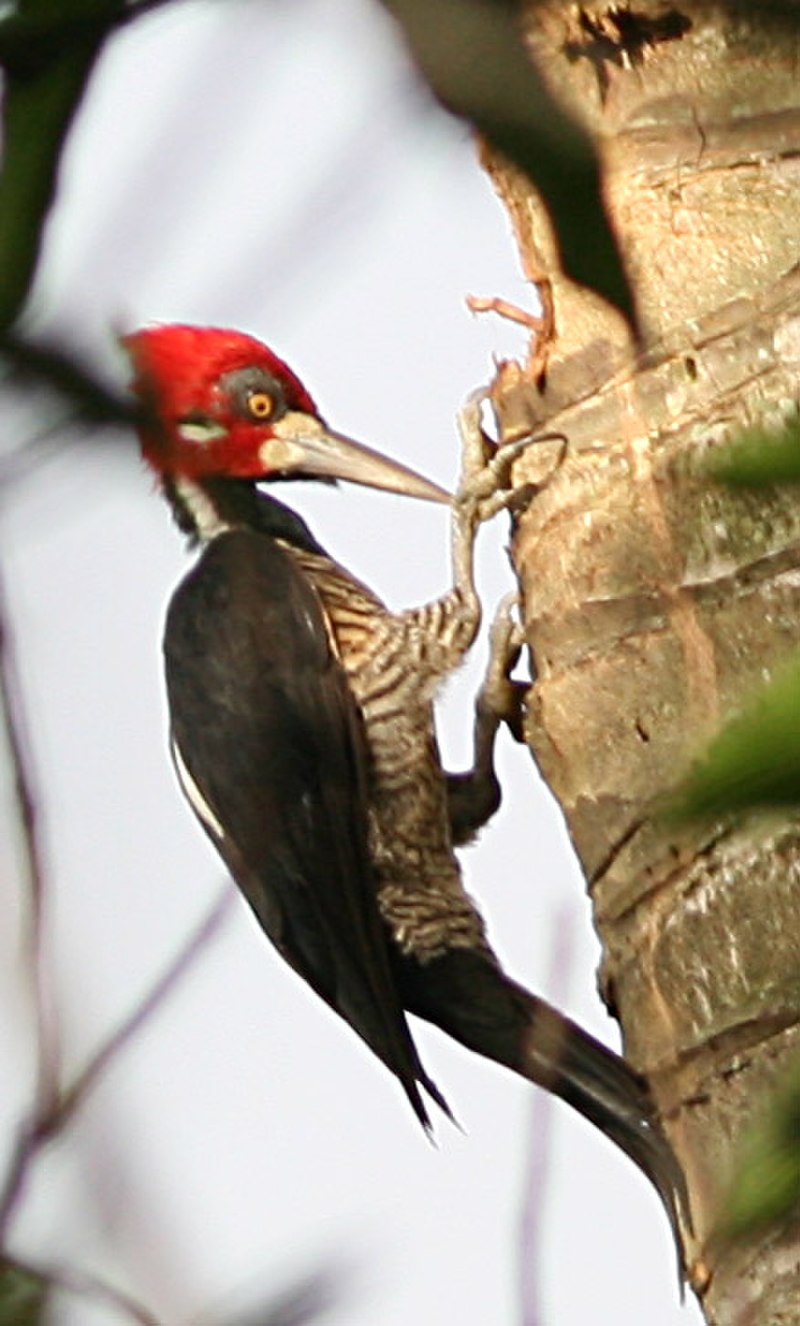
The Crimson-crested Woodpecker is a large species of woodpecker that can be found from Panama to northern Argentina and Trinidad. Its body measures 33-38 cm in length, with males weighing 180-285 g, making it one of the largest woodpeckers in its range.
This bird has bright red plumage on both its head and crest which stands out against the black feathers covering most of its body. It also displays white markings around its eyes and wings, further adding to their distinctive look.
The powerful bill helps them break through hard surfaces while feeding on insects or excavating cavities for nesting sites.
Though they are not threatened yet by human activities like deforestation or urbanization, experts still recommend protecting their habitats so these birds will continue to thrive into future generations.Scientific classification:
| Kingdom | Animalia |
| Phylum | Chordata |
| Class | Aves |
| Order | Piciformes |
| Family | Picidae |
| Genus | Campephilus |
| Species | C. melanoleucos |
29. Greater Ani
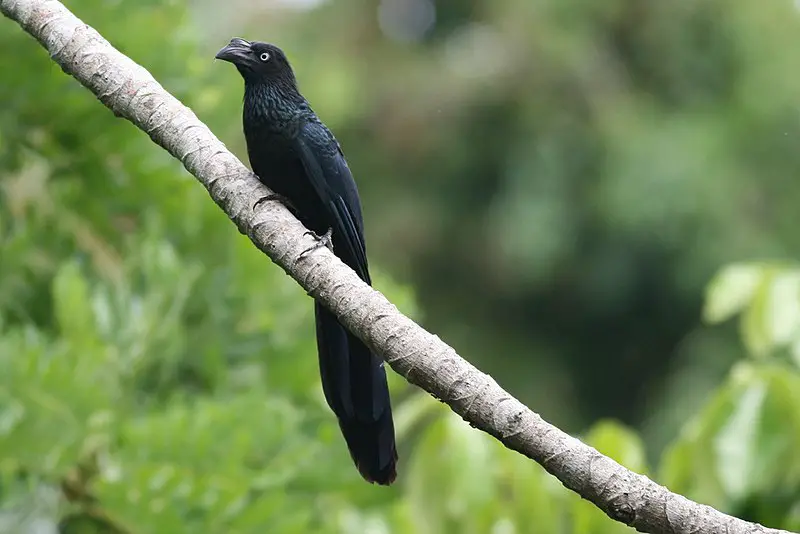
The Greater Ani is a bird belonging to the Cuckoo family, and sometimes referred to as the Black Cuckoo. It can be found in tropical South America all the way down to northern Argentina.
In 1760 Mathurin Jacques Brisson described this species based on a specimen collected from Cayenne, French Guiana. His description was accompanied by an illustration in his Ornithologie written in French.
This bird has black feathers with glossy greenish reflections along its body, while its head and neck are grey-black coloured with some white spots around its eyes and throat area . Its wingspan measures up to 40 centimeters long making it one of the largest cuckoos out there.Scientific classification:
| Kingdom | Animalia |
| Phylum | Chordata |
| Class | Aves |
| Order | Cuculiformes |
| Family | Cuculidae |
| Genus | Crotophaga |
| Species | C. major |
30. Blue-Crowned Trogon
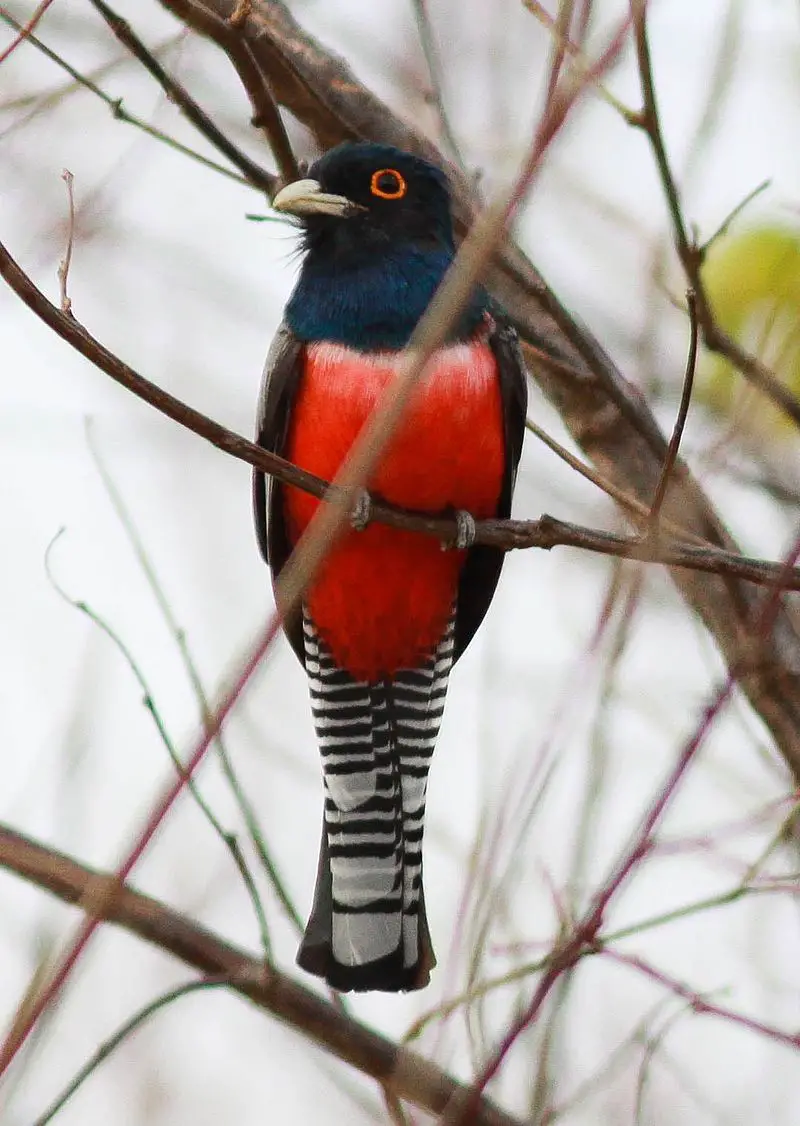
The Blue-crowned Trogon is a stunning bird found in the tropical regions of South America. It has beautiful and vibrant plumage that makes it stand out from other species.
The male sports an impressive blue head with an orange orbital ring, red belly, narrow white breastband and green back whereas the female’s coloration is slightly different with mainly brownish tones on her chestnut body.
These birds inhabit dense rainforests where they feed mainly on insects and small invertebrates which they search for by perching motionless in trees or gliding through their habitats at low levels.
They also have been known to visit garden fruit trees when available during certain times of year making them a welcome sight amongst farmers.
With its unique beauty these birds are likely to remain popular among ornithologists for years to come.Scientific classification:
| Kingdom | Animalia |
| Phylum | Chordata |
| Class | Aves |
| Order | Trogoniformes |
| Family | Trogonidae |
| Genus | Trogon |
| Species | T. curucui |
31. Barred Antshrike
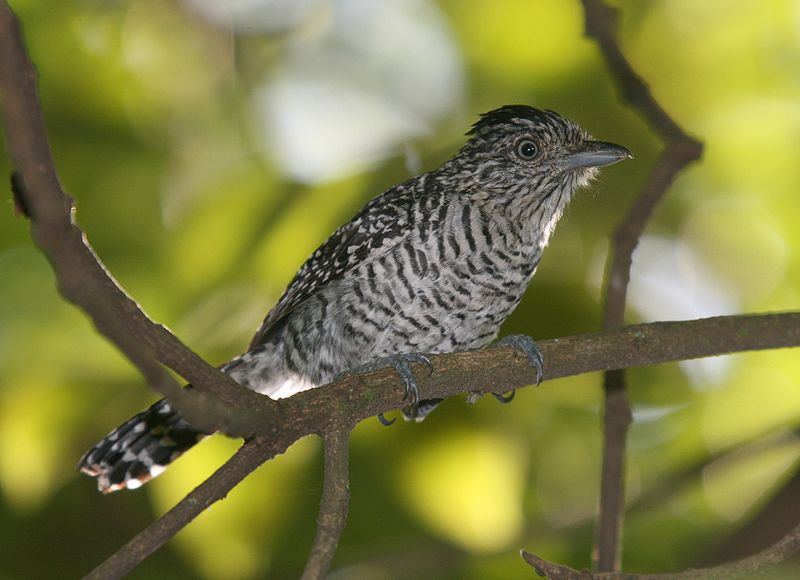
The Barred Antshrike is a beautiful bird belonging to the antbird family. It has an amazing range, being found in Mexico, Central America, Trinidad and Tobago as well as most of South America east of the Andes.
Even southern Texas has one accepted record. This small passerine can be spotted inhabiting wooded habitats that may consist of both dry and humid forests or even plantations with trees.
Its plumage consists mainly of black barring on its chestnut back along with white stripes on its wings giving it a unique look in flight.
Despite their shy nature they are quite vocal during breeding season when males sing from high perches for courtship displays; this is also when you’re likely to spot them at best.Scientific classification:
| Kingdom | Animalia |
| Phylum | Chordata |
| Class | Aves |
| Order | Passeriformes |
| Family | Thamnophilidae |
| Genus | Thamnophilus |
| Species | T. doliatus |
32. Red-Faced Guan
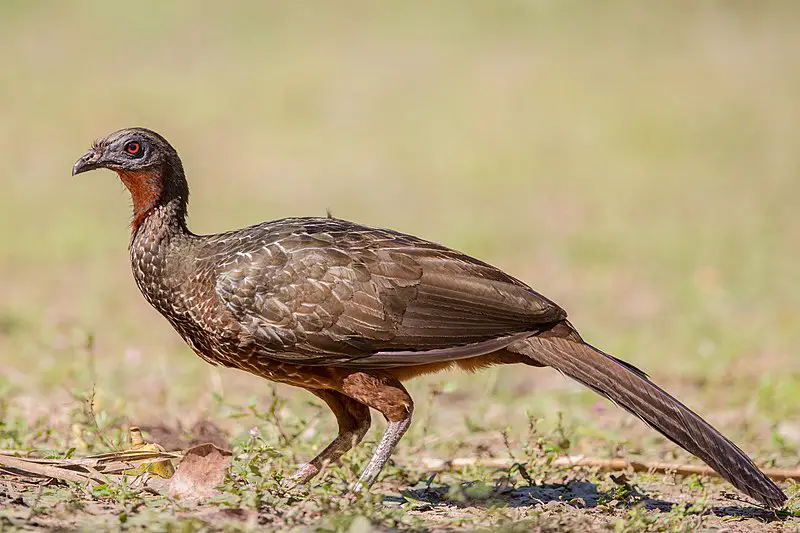
The red-faced guan is a species of bird belonging to the Cracidae family and is native to Argentina and Bolivia. It has striking, bright red feathers on its face which distinguishes it from other members of the genus Penelope.
Studies have suggested that it could be closely related to either Andean or Dusky-legged Guan, although some authors suggest treating this as a separate subspecies altogether. Its diet mainly consists of fruits, seeds and insects with occasional small vertebrates making up part of its meals too.
The Red-Faced Guan can often be found in humid forests where there are plenty of trees for them to nest in during breeding season; usually laying two eggs at once which later hatch after about three weeks incubation period by both parents taking turns sitting over them until they hatch out into little fluffy chicks.Scientific classification:
| Kingdom | Animalia |
| Phylum | Chordata |
| Class | Aves |
| Order | Galliformes |
| Family | Cracidae |
| Genus | Penelope |
| Species | P. dabbenei |
33. Black-Bodied Woodpecker
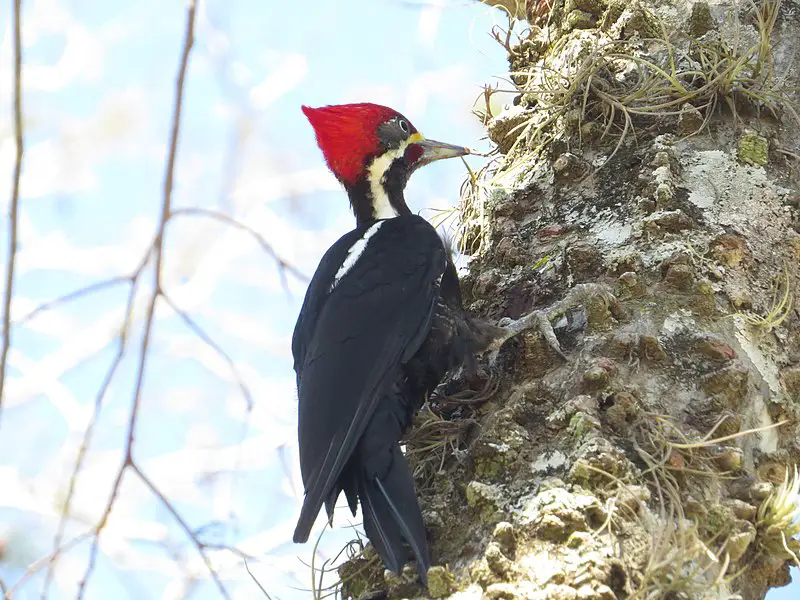
The Black-bodied Woodpecker is a species of bird in the Picidae family. It is found mainly in Argentina, Bolivia and Paraguay, inhabiting subtropical or tropical dry forests, moist savannas and plantations.
These birds have black bodies with white shoulders that contrast against their colorful wings which can vary from yellow to red depending on individual variations within the same region. They are known for their loud calls that echo through their habitats.
The Black-bodied Woodpecker feeds mostly on insects but also eats berries and small fruits when available. As an omnivore it plays an important role in both seed dispersion as well as controlling insect populations.Scientific classification:
| Kingdom | Animalia |
| Phylum | Chordata |
| Class | Aves |
| Order | Piciformes |
| Family | Picidae |
| Genus | Dryocopus |
| Species | D. schulzii |
34. Military Macaw
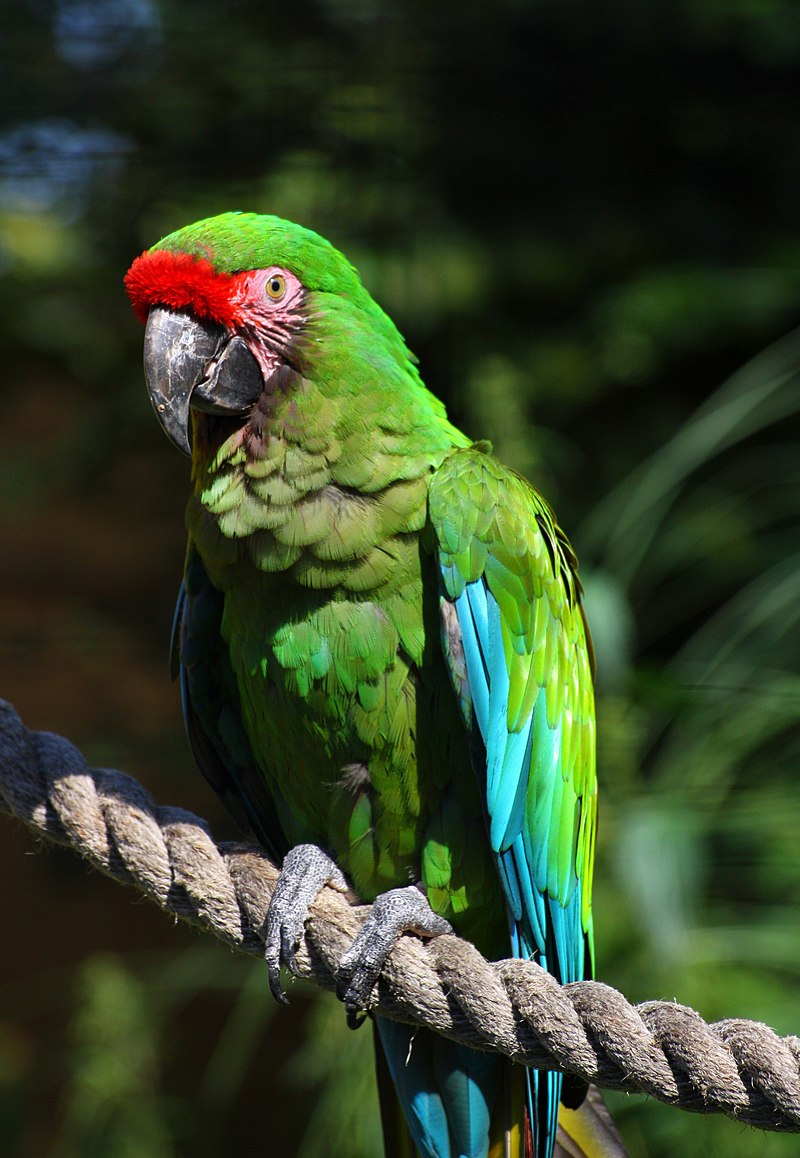
The Military Macaw is a stunning bird with vibrant, green feathers. It has been given its name due to the resemblance of its plumage to a military parade uniform.
This medium-sized macaw can be found in forests from Mexico and South America and although it’s considered vulnerable in the wild, it remains commonly seen within pet trade industries.
First described by Swedish naturalist Carl Linnaeus in 1766, this beautiful parrot stands out for its intelligence and ability to mimic human speech relatively well. Its diet consists mainly of seeds, nuts and fruits – but also includes some insects too.
Given proper care they make wonderful companions; however their loud screeching means owning one should not be taken lightly.Scientific classification:
| Kingdom | Animalia |
| Phylum | Chordata |
| Class | Aves |
| Order | Psittaciformes |
| Family | Psittacidae |
| Genus | Ara |
| Species | A. militaris |
35. Brown-Banded Puffbird
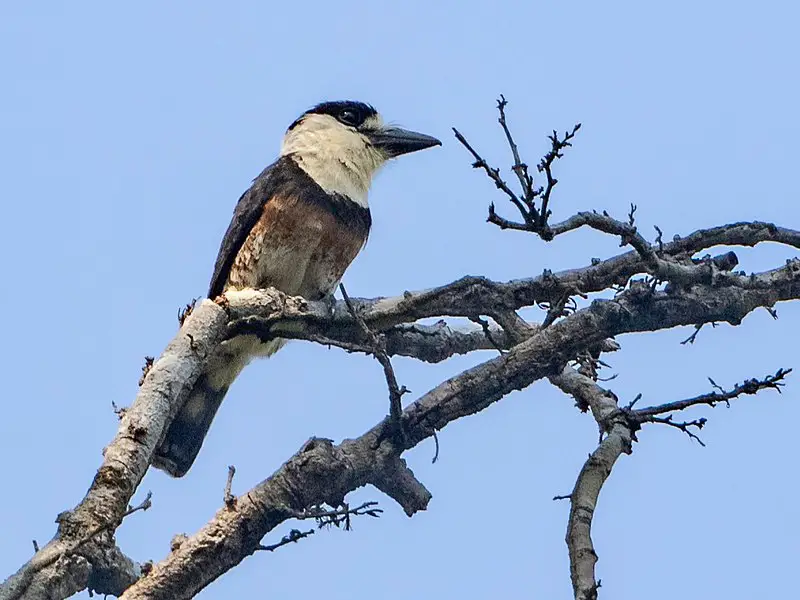
The Brown-banded Puffbird is a species of bird in the Bucconidae family with its range extending from Bolivia to Venezuela. It is one of two related species, the other being Black-breasted Puffbird.
These birds have an average length between 17 and 18 cm and are mainly grey or brownish in coloration with black streaks on their back, wings and head which give them a unique appearance. They feed mostly on insects but also eat some fruits too.
During nesting season these birds build nests that consist of small hollows lined with downy feathers usually found at heights up to four meters above ground level.
The female lays 2 – 3 eggs at once before incubating them for 16 days until they hatch into chicks who will remain dependent upon their parents for another 14 weeks after hatching before they can become fully independent adults capable of flying away from home.Scientific classification:
| Kingdom | Animalia |
| Phylum | Chordata |
| Class | Aves |
| Order | Piciformes |
| Family | Bucconidae |
| Genus | Notharchus |
| Species | N. ordii |
36. Barred Forest Falcon
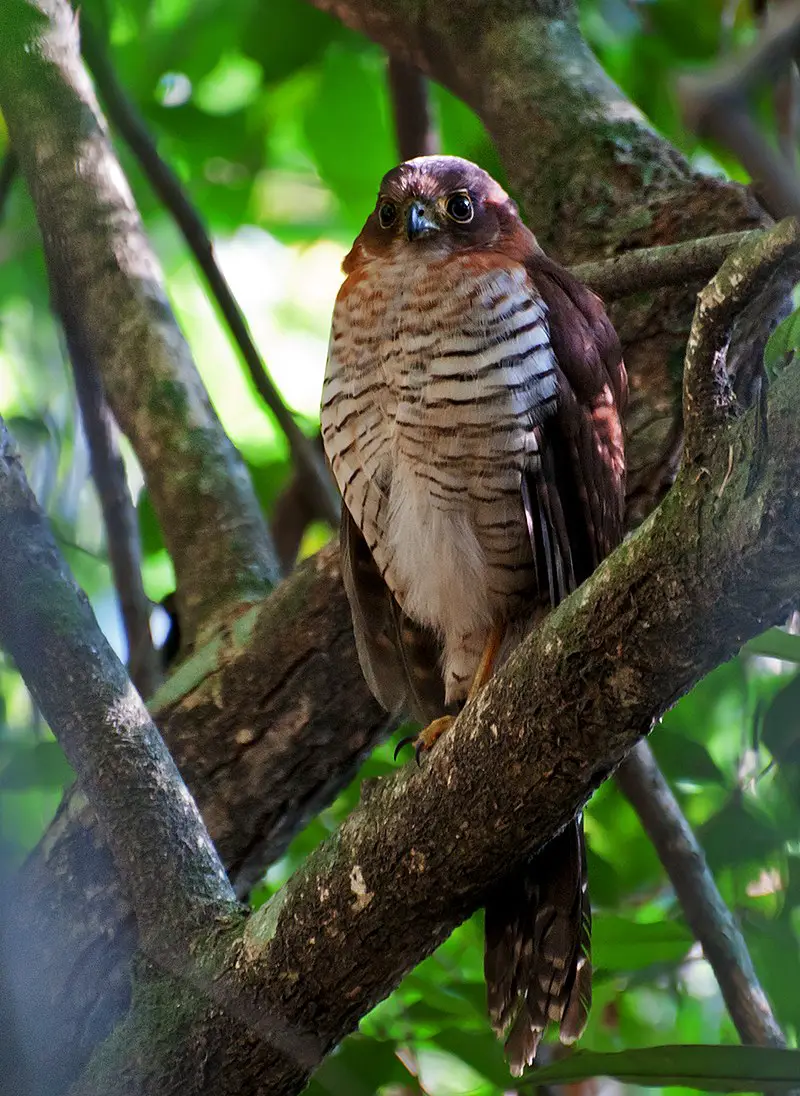
The Barred Forest Falcon is a species of bird belonging to the family Falconidae. It inhabits tropical and subtropical regions in Latin America, except for some parts of Mexico and its surrounding islands.
Adults have dark slate grey feathers on their upper body while the tail has white bars along with blackish-brown stripes near its tip. Its underbelly ranges from whitish or pale rufous color depending on subspecies.
This bird feeds mainly on small birds, reptiles, amphibians and insects which it hunts during midair chases using its sharp talons as well as by hovering over open areas before diving suddenly into prey.
Despite being fairly common in certain areas where they are found, their numbers have been declining due to habitat loss caused by human activities like deforestation and urbanizationScientific classification:
| Kingdom | Animalia |
| Phylum | Chordata |
| Class | Aves |
| Order | Falconiformes |
| Family | Falconidae |
| Genus | Micrastur |
| Species | M. ruficollis |
37. Black-Banded Owl
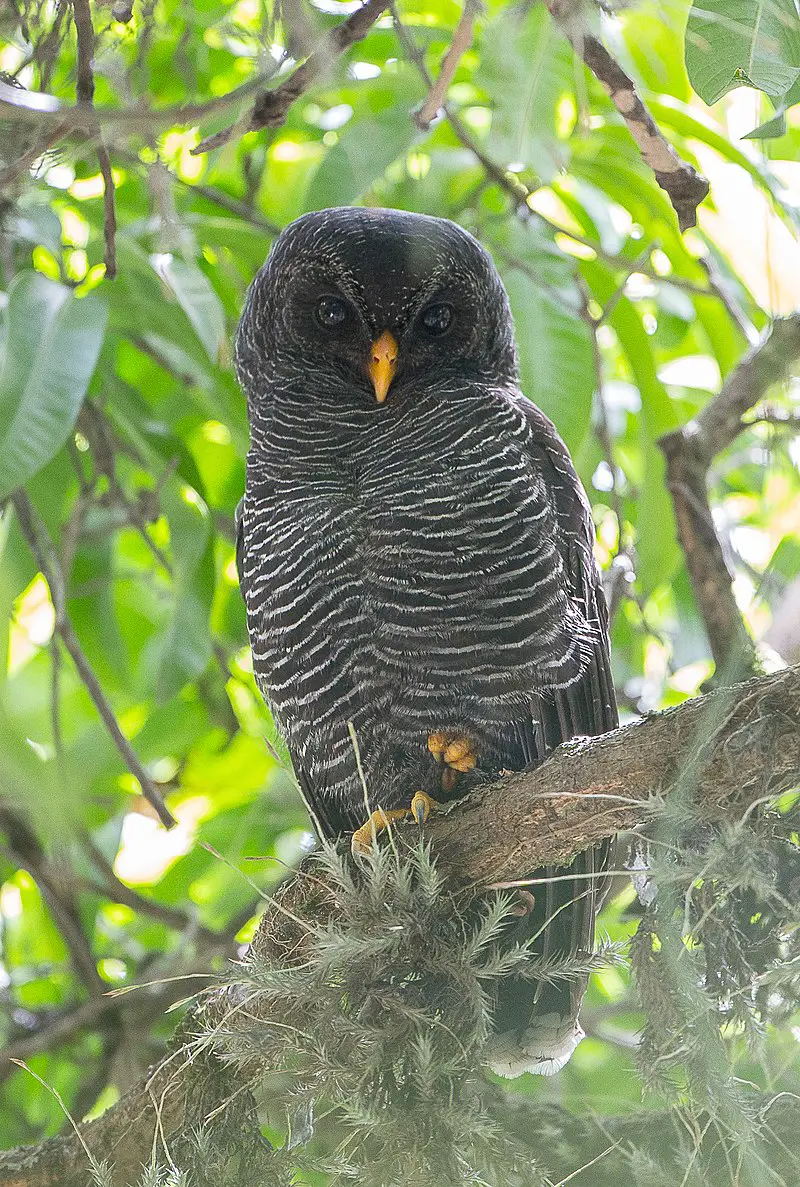
The Black-banded Owl is a beautiful midsized bird found in South America. It has black and white feathers, with its underside usually showing off intricate checkered feather patterns.
This species of owl is entirely nocturnal and inhabits tropical or subtropical forests from lowlands to medium altitude areas such as Argentina, Bolivia, Brazil and Colombia. Their diet consists mostly of small mammals like rats while they also prey on birds occasionally too.
The Black-banded Owl are very territorial creatures who use their hooting calls during the night time to mark out their territory against other owls encroaching upon it.
Although not much research has been conducted on them yet due to their reclusive nature, the little that we do know about these wonderful creatures makes us want to learn more about them.Scientific classification:
| Kingdom | Animalia |
| Phylum | Chordata |
| Class | Aves |
| Order | Strigiformes |
| Family | Strigidae |
| Genus | Strix |
| Species | S. huhula |
38. Black-Banded Woodcreeper
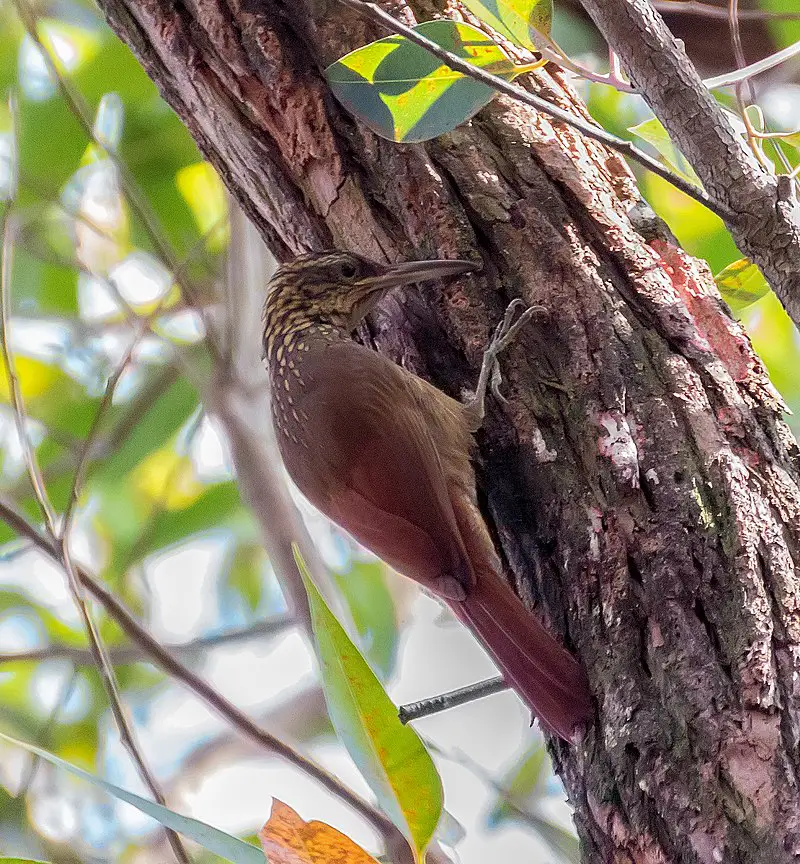
The Black-banded Woodcreeper is a species of bird found in the Dendrocolaptinae subfamily.
It lives across Central and South America, from Chiapas to Paraguay and northern Argentina, inhabiting both lowland subtropical or tropical forests as well as montane ones.
These birds are mainly brown with black bands on their wings that makes them easily recognizable when they fly away.
They feed mostly on insects by probing into tree bark for them using their long curved bills.
The first record of this species was made back in 1789 but its population remains stable so far due to conservation efforts put forth by many organizations around the world who dedicate themselves to protecting these beautiful creatures and their habitats.Scientific classification:
| Kingdom | Animalia |
| Phylum | Chordata |
| Class | Aves |
| Order | Passeriformes |
| Family | Furnariidae |
| Genus | Dendrocolaptes |
| Species | D. picumnus |
Also Featured In: Birds That Live in the Jungle,
39. Black-Bellied Antwren
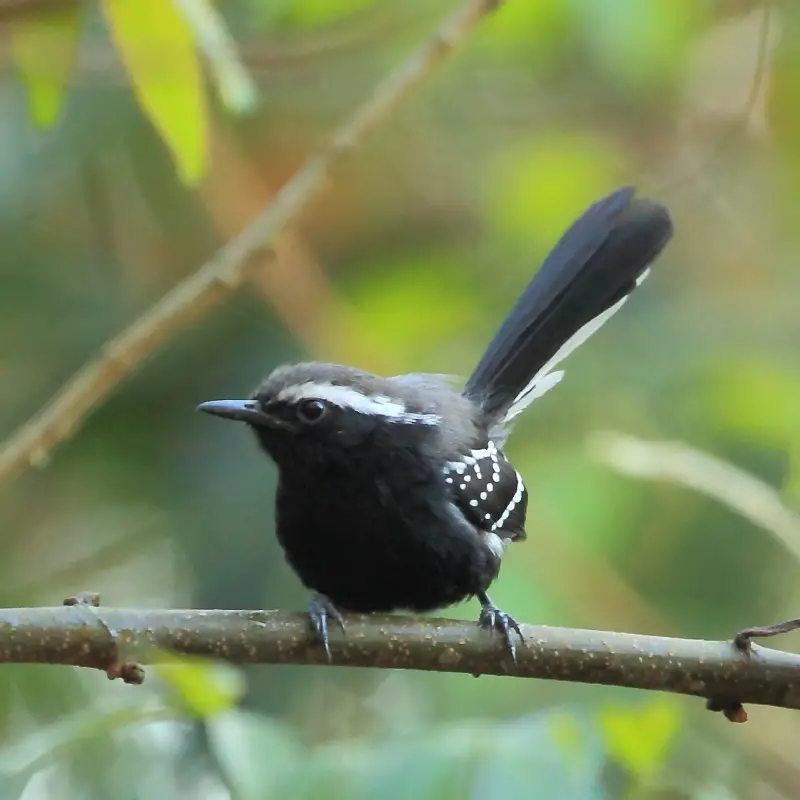
The Black-bellied antwren is a species of bird belonging to the family Thamnophilidae. It inhabits subtropical or tropical dry forests in Bolivia, Brazil and Paraguay.
This bird was first described by Austrian ornithologist August von Pelzeln back in 1868 with its scientific name Formicivora melanogaster. The black-bellied antwren has a distinctive appearance: it’s grayish brown above and white below, with dark wingtips and tail tip as well as cinnamon undertail coverts that give its belly an almost black coloration.
Its song consists mostly of high pitched squeaks which makes it easy to identify among other birds from far away.Scientific classification:
| Kingdom | Animalia |
| Phylum | Chordata |
| Class | Aves |
| Order | Passeriformes |
| Family | Thamnophilidae |
| Genus | Formicivora |
| Species | F. melanogaster |
40. Black-Capped Antwren
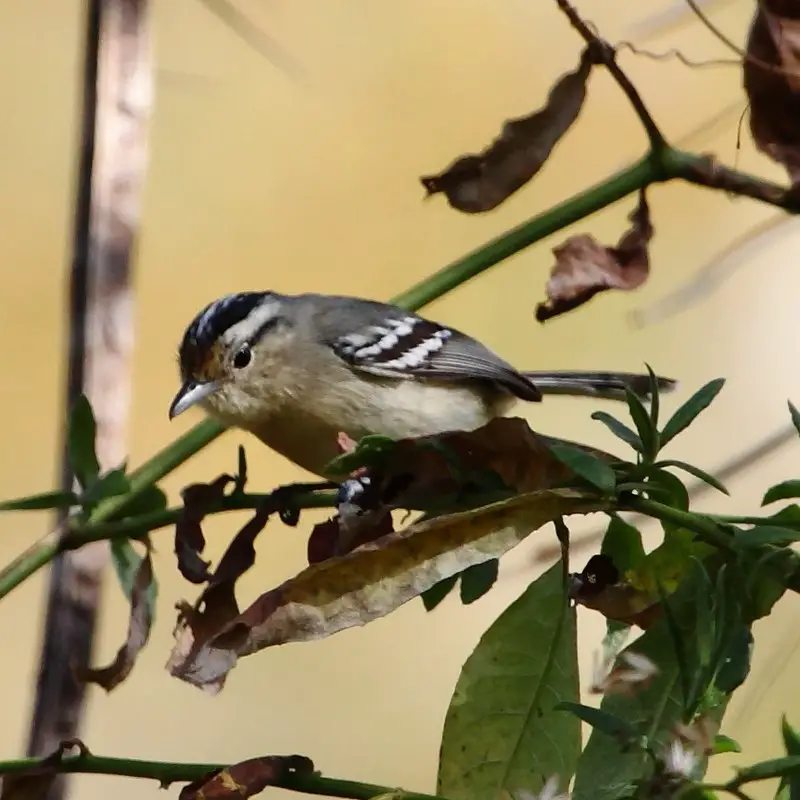
The Black-capped Antwren is a species of bird that belongs to the Thamnophilidae family. It can be found in Argentina, Bolivia, Brazil and Paraguay living in dry subtropical or tropical forests as well as moist lowland forests.
This small songbird was first described by Austrian ornithologist August von Pelzeln back in 1868 who gave it its current binomia name.
With an average length between 12 and 14 cm (4.7 – 5.5 inches), they are easily identified by their black cap covering their head down to the nape with a white patch on either side of face, throat and breast being off-white or buffy coloration while wings have olive upperparts contrasting whitish underparts covered with dark streaks along sides giving them distinctive look among other members of this family .Scientific classification:
| Kingdom | Animalia |
| Phylum | Chordata |
| Class | Aves |
| Order | Passeriformes |
| Family | Thamnophilidae |
| Genus | Herpsilochmus |
| Species | H. atricapillus |
41. Bar-Bellied Woodcreeper
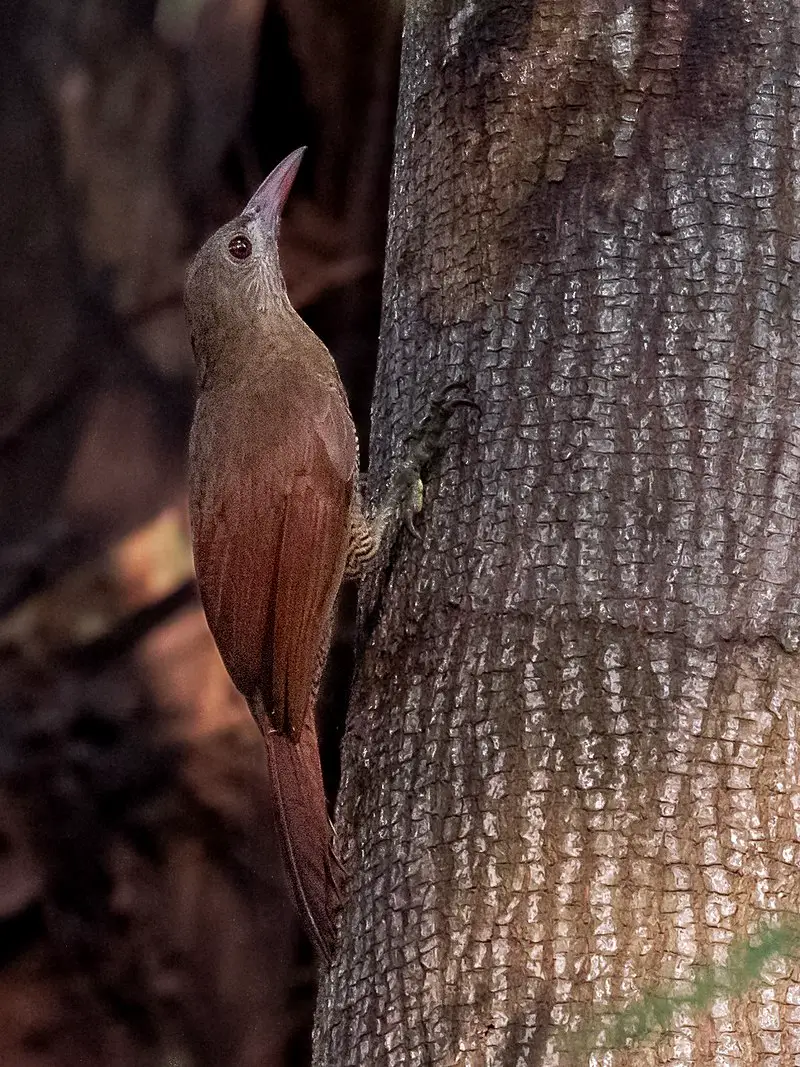
The bar-bellied woodcreeper is a stunning bird, with its bold black and white plumage. It belongs to the Dendrocolaptinae subfamily of birds, which are found in humid forests throughout western Amazonia from northern Bolivia down to eastern Ecuador.
This species has recently been confirmed as occurring in eastern Ecuador too. The wide range of habitats it occupies makes this an adaptable and resilient creature capable of surviving different environments successfully.
They forage mainly on tree trunks by clambering up them using their long claws, searching for insects or larvae around bark crevices and dead branches; they also take fruits when available.
Despite being widely distributed across the region, their populations remain relatively small so conservation efforts should be implemented if we want these beautiful creatures around us for many years to come.Scientific classification:
| Kingdom | Animalia |
| Phylum | Chordata |
| Class | Aves |
| Order | Passeriformes |
| Family | Dendrocolaptidae |
| Genus | Hylexetastes |
| Species | H. stresemanni |
42. Bolivian Slaty Antshrike
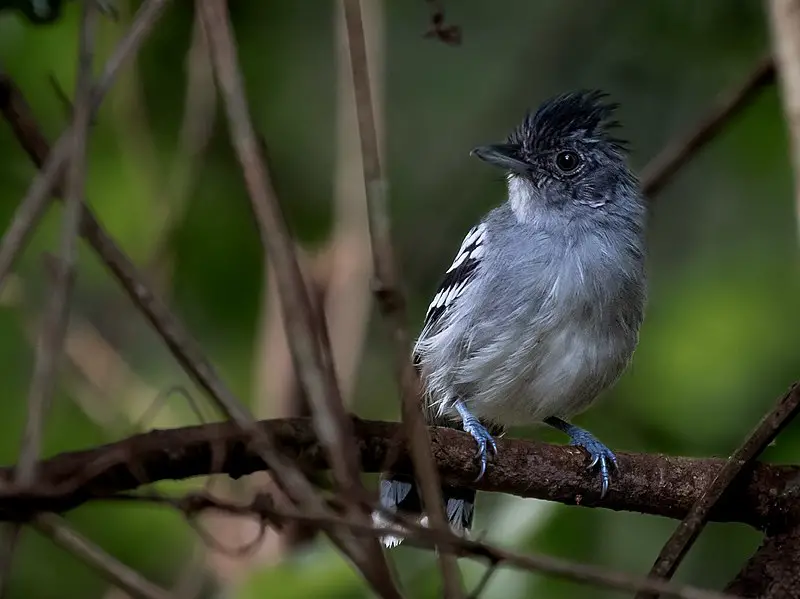
The Bolivian Slaty Antshrike is a species of bird belonging to the Thamnophilidae family. It can be found in Bolivia, southwest Brazil and northern Paraguay.
Its plumage consists of a slate grey back with white underparts and distinctive black-and-white wings. The bird feeds mainly on insects, which it catches by sallying or hovering briefly over trees and bushes before returning to its perch.
During courtship displays they perform mutual preening as well as duetting while hopping around each other’s perches. They are considered uncommon but fairly widespread throughout their range, making them vulnerable but not endangered at this time..Scientific classification:
| Kingdom | Animalia |
| Phylum | Chordata |
| Class | Aves |
| Order | Passeriformes |
| Family | Thamnophilidae |
| Genus | Thamnophilus |
| Species | T. sticturus |
43. Green-Cheeked Parakeet
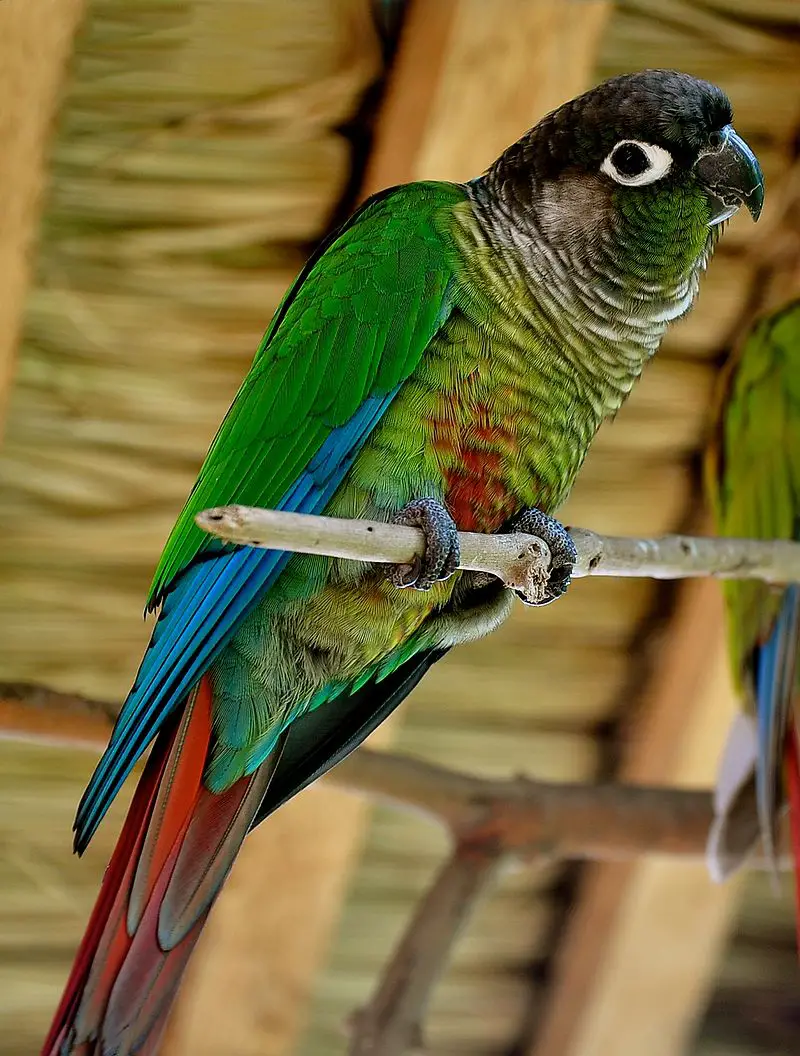
The green-cheeked parakeet is a small and colorful bird native to Central and South America. Also known as the green-cheeked conure, they are part of the long-tailed group of New World parrots from the subfamily Arinae.
These birds have been popular in aviculture for many years due to their bright plumage and playful personalities, making them excellent companion pets.
They can be noisy but also enjoy quiet time with their owners, often cuddling up into one’s neck or shoulder for naps.
Green cheeks require plenty of enrichment activities such as toys, perches and swings in order to stay mentally stimulated; otherwise they may become bored or develop unwanted behaviors.
With proper care these vibrant birds can make amazing lifelong companions.Scientific classification:
| Kingdom | Animalia |
| Phylum | Chordata |
| Class | Aves |
| Order | Psittaciformes |
| Family | Psittacidae |
| Genus | Pyrrhura |
| Species | P. molinae |
Also Featured In: Aviary Birds You Should Know, Case Birds that Live in with Us
44. Brown Tinamou
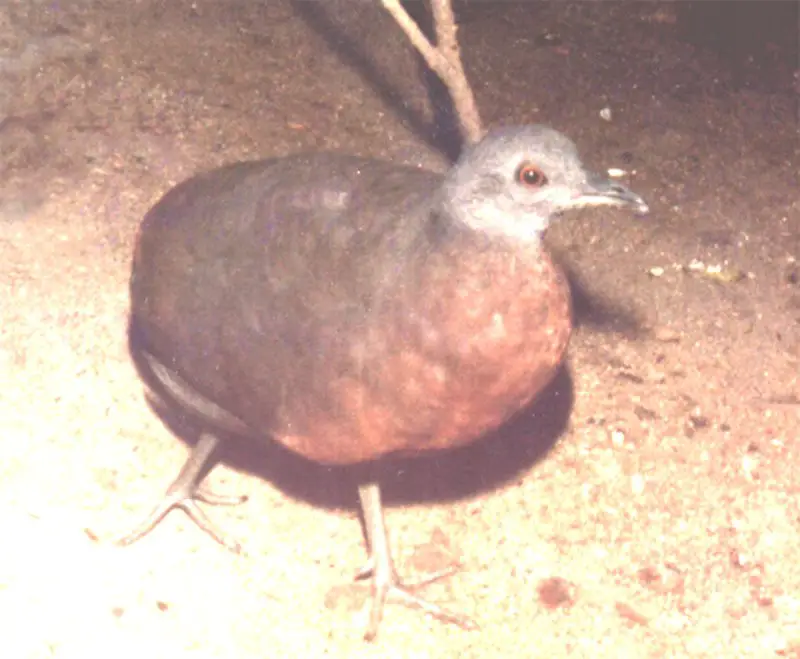
The Brown Tinamou is a ground-dwelling bird native to tropical and subtropical South America. It has brownish plumage, with lighter coloured wings and tail feathers.
This species prefers humid lowland forests or montane habitats. They feed on seeds, fruits and insects found in the forest floor such as beetles, grasshoppers and caterpillars.
Although they are often seen alone or in pairs, large flocks of up to 20 birds may form when food is plentiful. The Brown Tinamou shares many characteristics with other ratites; however it does not possess some of the features which define true ratites like an inability to fly or an absence of keel bone from its breastbone structure.
Despite this unusual classification these birds have adapted well over time into their natural environment making them one of nature’s most interesting creatures.Scientific classification:
| Kingdom | Animalia |
| Phylum | Chordata |
| Class | Aves |
| Infraclass | Palaeognathae |
| Order | Tinamiformes |
| Family | Tinamidae |
| Genus | Crypturellus |
| Species | C. obsoletus |
45. Bolivian Spinetail
The Bolivian spinetail is a species of bird in the Furnariidae family, endemic to Bolivia. It was first discovered near Inquisivi in 1993 and its natural habitats consist of subtropical or tropical dry forests and plantations.
Unfortunately, this species has become threatened due to habitat loss from deforestation. These birds have brownish-olive upperparts with white underparts marked with black bars on their wings as well as an orange throat patch during breeding season.
They are often seen foraging for food amongst foliage and tree trunks at midstory level rather than at the ground layer like other related spinetails do.
The Bolivian Spinetail is an endangered species that needs our protection if it’s going to survive.Scientific classification:
| Kingdom | Animalia |
| Phylum | Chordata |
| Class | Aves |
| Order | Passeriformes |
| Family | Furnariidae |
| Genus | Cranioleuca |
| Species | C. henricae |